Crossing from Norway to Sweden–The Skagerrak Strait
Wow! This is the final segment of Season 2, cruising with Hokukea! We can hardly believe the miles we’ve covered and the places we’ve been 🙂 Our final segment began with crossing the Skagerrak Strait, the body of water north of Denmark, west of Sweden, and east of Norway. We were feeling a bit anxious to get to Sweden because we had some weather delays and needed to get to Baltic-Kalmar Marina in SE Sweden where we’d reserved a spot and date (September 18) to haul out Hokukea and put her in indoor storage for the winter.
We crossed the Skagerrak from Mandal, Norway to Långedrag Marina (home of Gothenburg Royal Sailing Society). It took us a little more than 28 hours to cover the 156 miles across the Skagerrak. Based on the weather forecast, we expected a fast trip (23-24 hrs), and we started out sailing really well on a comfortable point of sail. At about midnight, however, the sails began to luff (bang around) and the wind got behind the headsail causing an accidental tack. We weren’t sure what happened initially: Did a genoa sheet or car break? Why did our auto-pilot go off-line?… Was it broken? As it turned out, it was “just” a 90 degree wind shift…. and we found ourselves on a very uncomfortable point of sail with a lot of slewing around and dropping off waves. Dropping off waves slows the boat down a lot. Our speed dropped from 6-7 knots to 4-5 knots. And then, just to keep us on our toes, the shipping traffic increased exponentially as we approached the north of Denmark. We later learned from some cruising friends that this area is among the busiest shipping areas in the world.
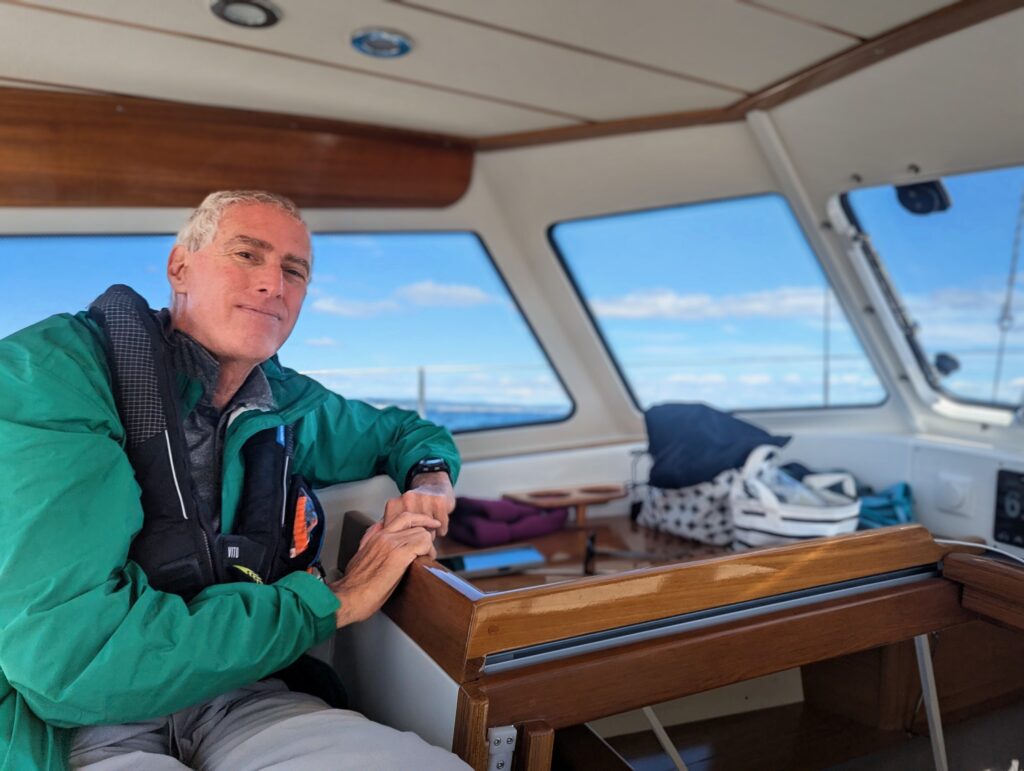
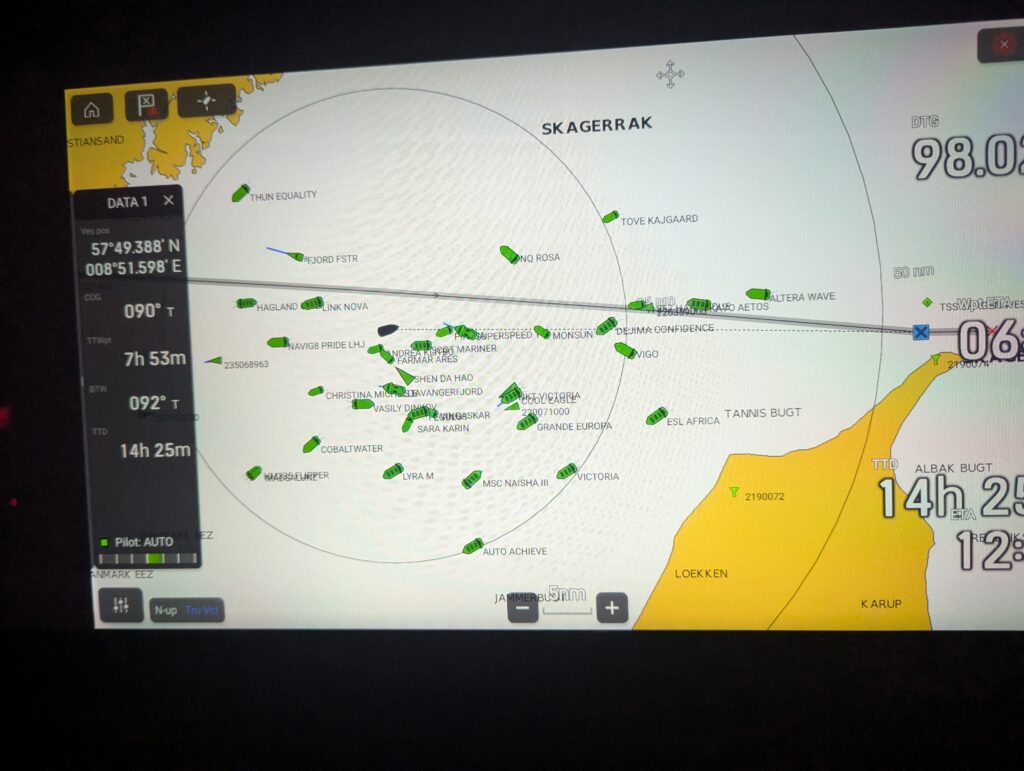
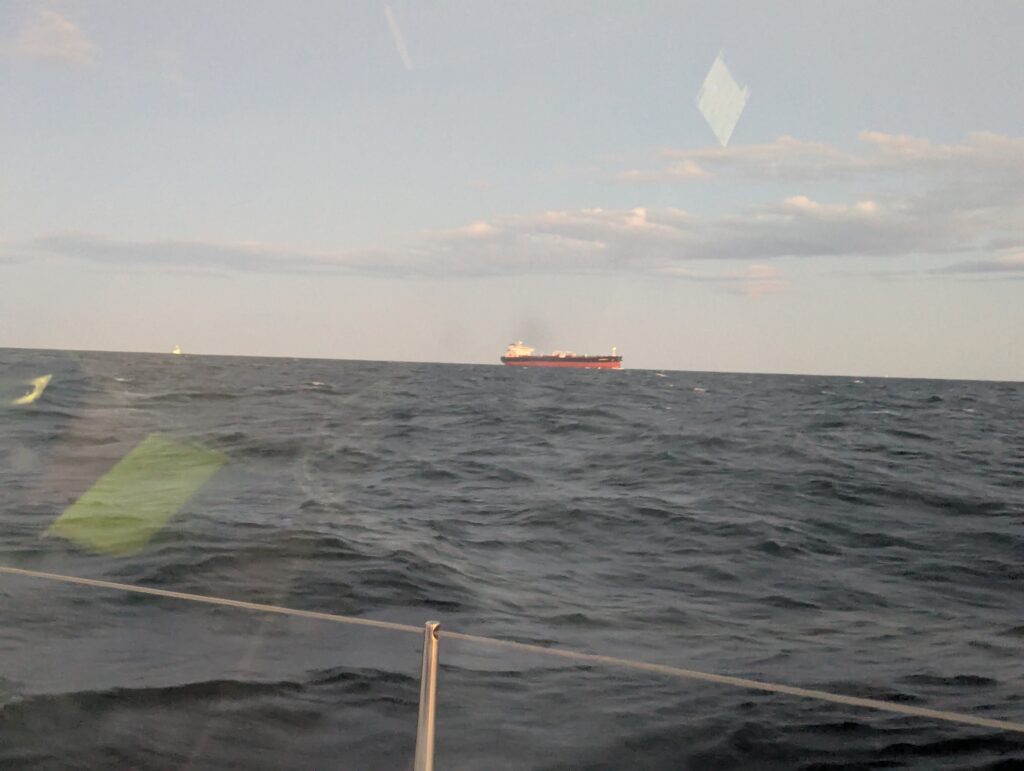
We were sailing well and fast before the 90 degree windshift.
Gothenburg (Långedrag)
After a long night and then a long day, we finally got to Långedrag Marina in fairly breezy conditions. We were tired, and then we were challenged with parking between posts and tying our lines to them, a type of docking we had not yet done/practiced. Luckily, some sailing friends (Kate and Mike Farthing) with a similar boat to ours had provided us with a step-by-step description of how they docked in that marina. They were nearby the marina, so they took photos of our assigned slip for us. They also sent photos of how they tied their boat up in that marina. Their instructions were enormously helpful and we docked without incident. An employee of the harbor also came out and helped us with our bow lines.
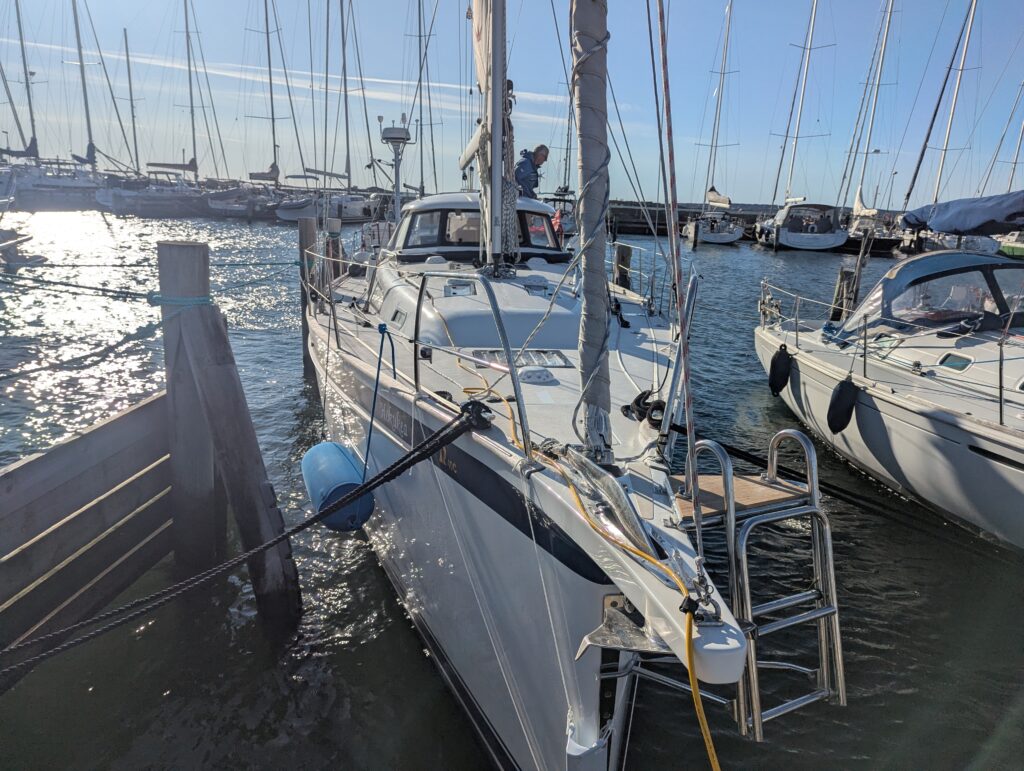
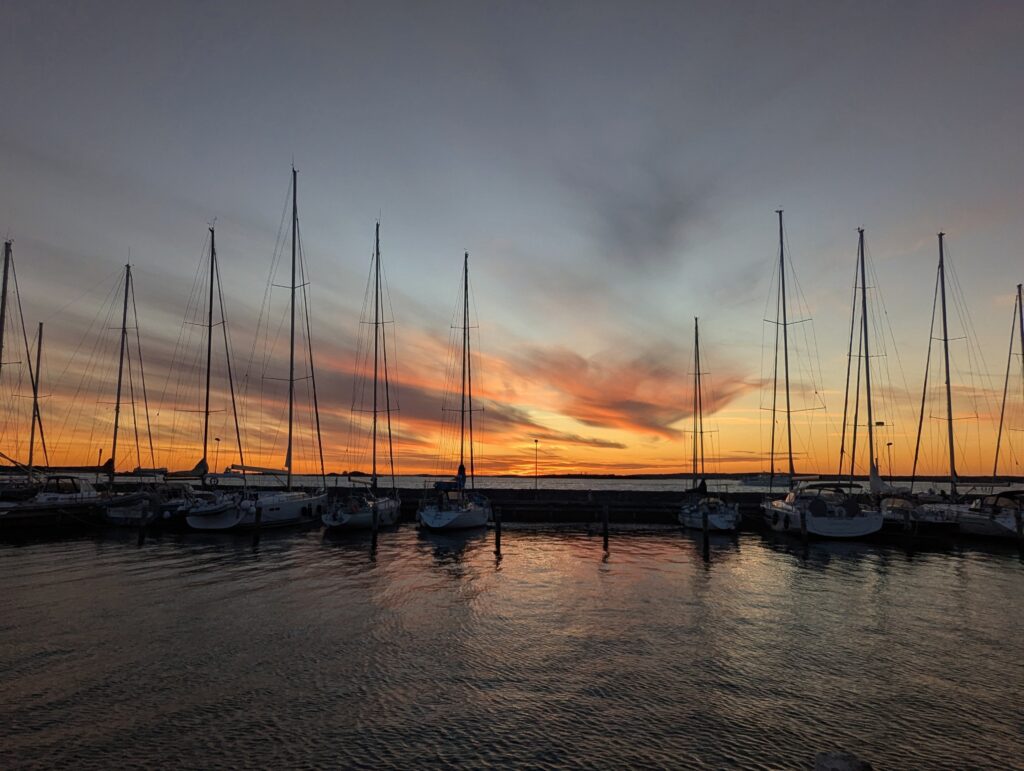
Långedrag is like a suburb of Gothenburg. We had been to Gothenburg twice before, so we explored the little towns near Långedrag and found them to be really nice.
Varberg
When the winds shifted so that we could travel south, we headed out from Långedrag to Varberg. We had never heard of Varberg before, and it turned out to be one of our favorite Swedish towns!
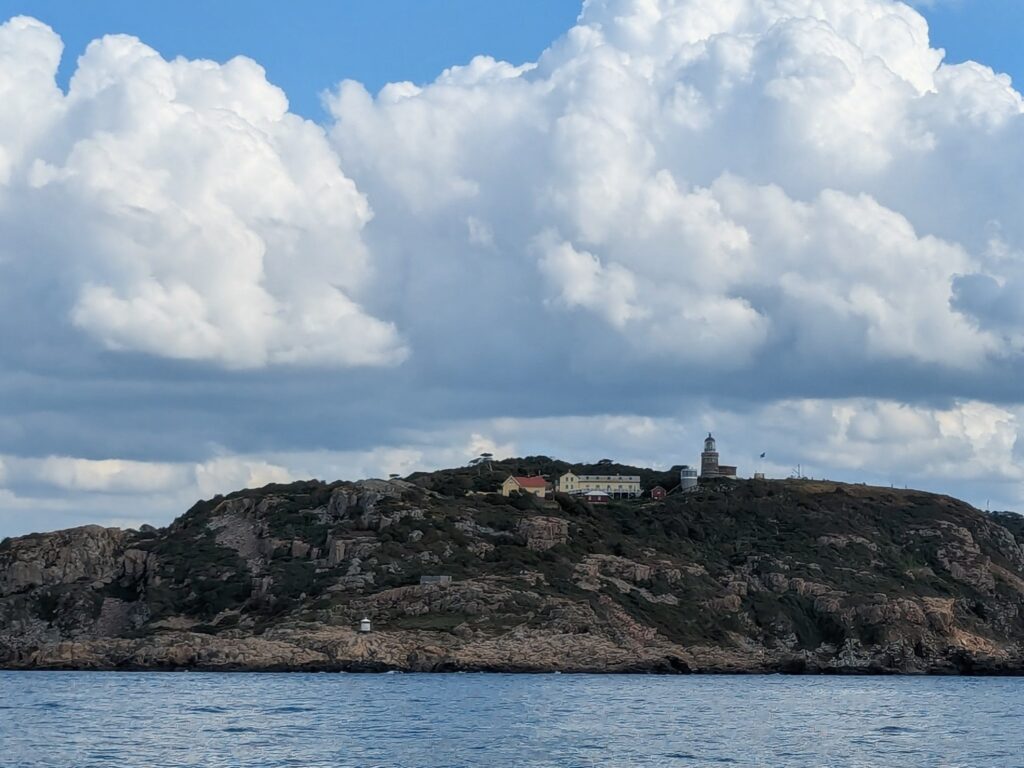
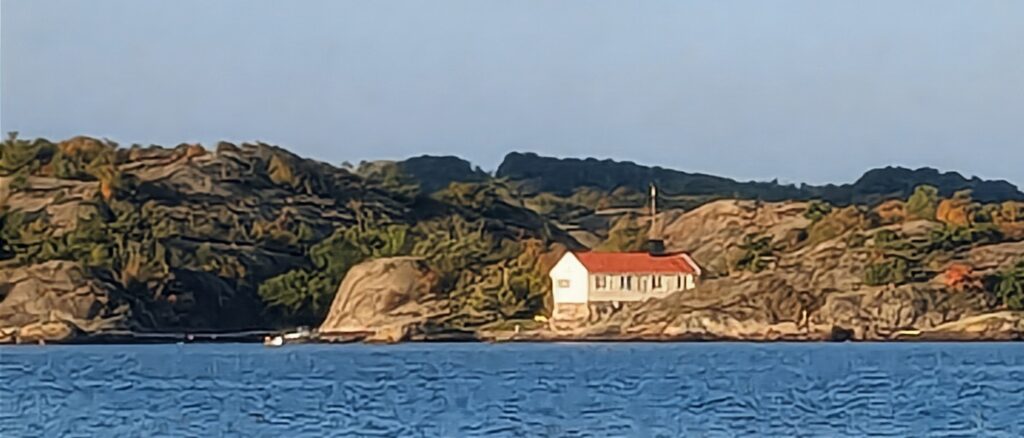
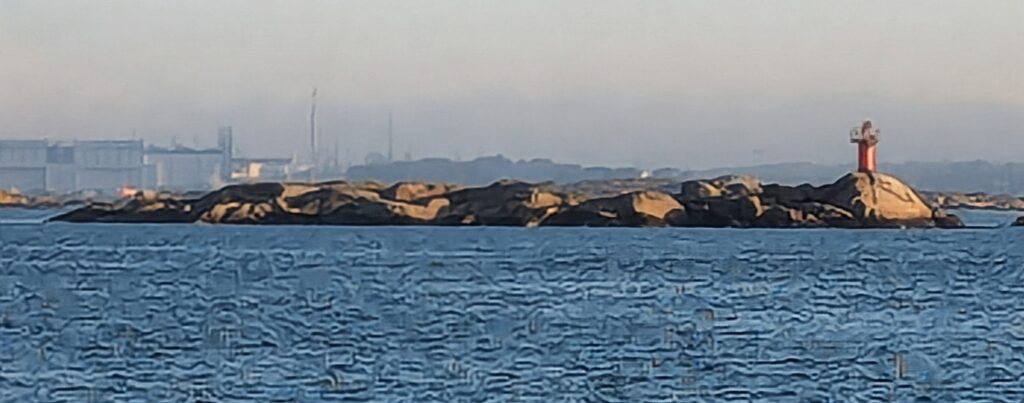
Motoring on a glassy sea (no wind) on our way to Varberg.
This is a bath-house (swimming house) that is still in use in Varberg. It looked like a castle as we approached Varberg from the sea.
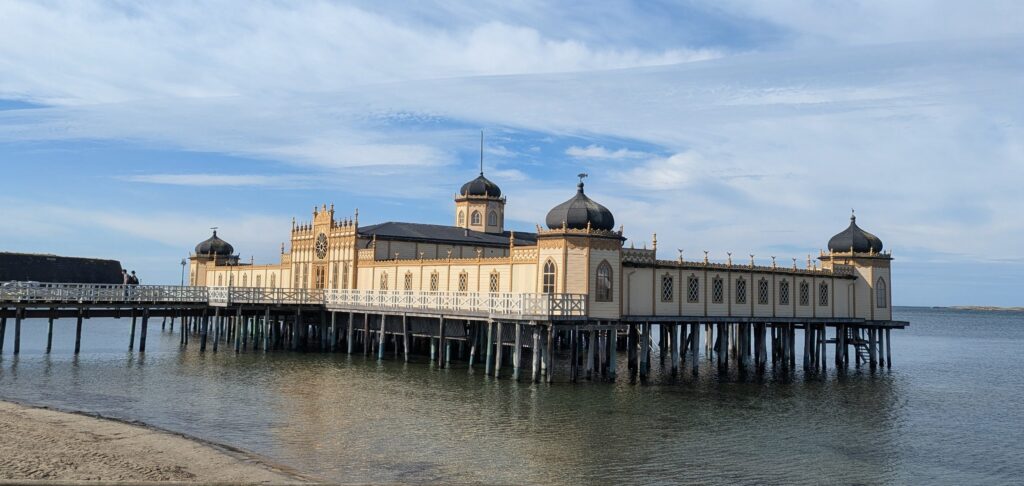
Halmstad
The town of Halmstad is up a river!…. So we went up that river and docked alongside the shore. I had come down with a bad cold, so we didn’t do much while we were there, but we did walk down the river a bit and across a bridge to see the town. The town was cobblestone, with several pedestrian-only streets, and nice shops, cafes, and restaurants.
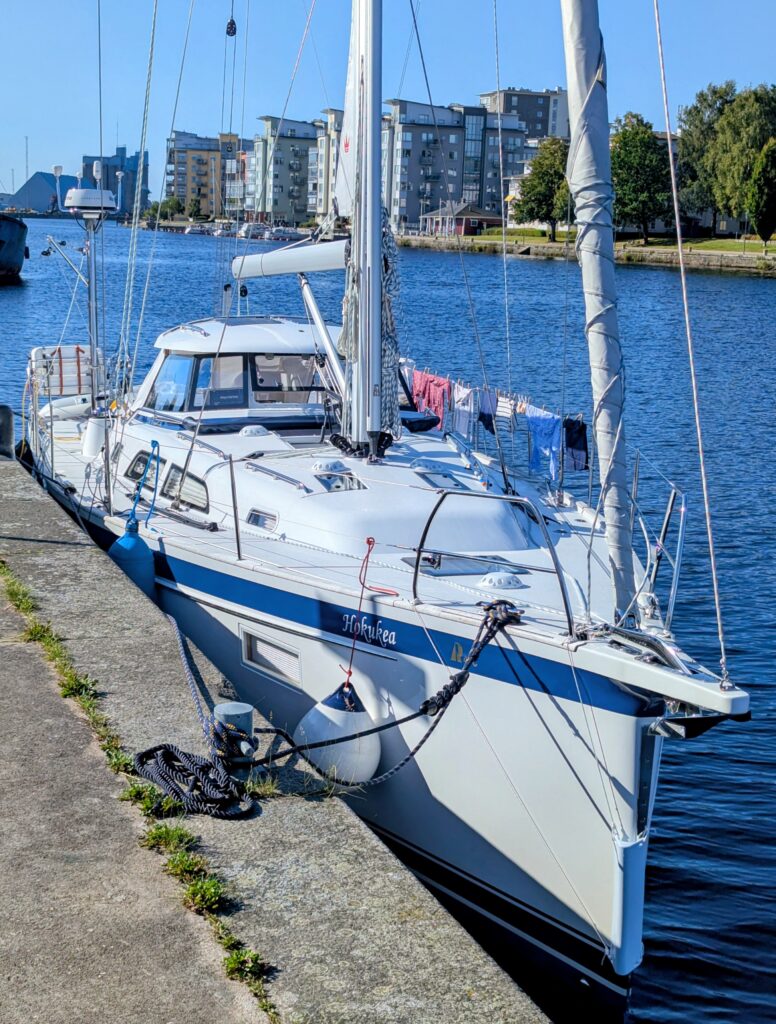
It was fun to dock alongside the riverbank in Halmstad.
Helsingborg
Helsingborg is a relatively big city (pop. 150,000+) and we had originally planned to spend 2 days here, but the winds were favorable for moving along south, so we decided to limit ourselves to one day.
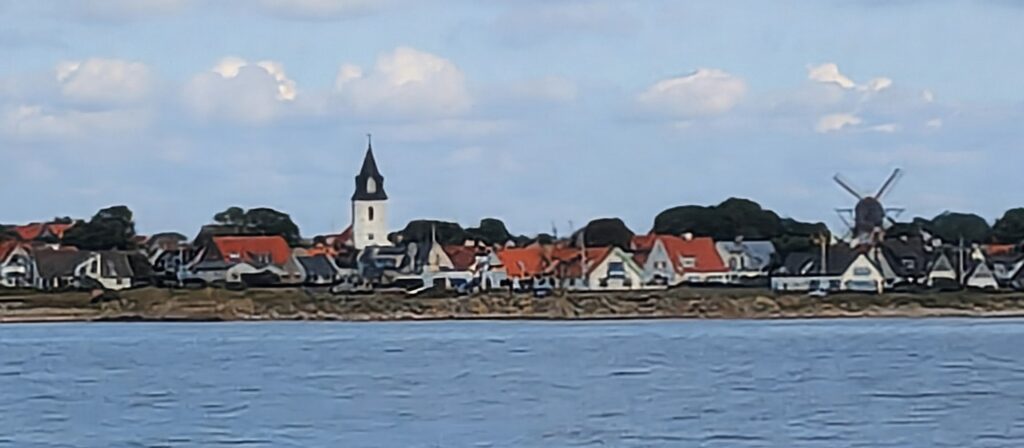
Malmö
Malmö is the 3rd largest city in Sweden and is just across from Copenhagen. We docked at a new marina at the streetfront and enjoyed the sights and restaurants of the big city. We saw many Danish boats in the harbor and learned that many Danes come for a couple of days “holiday” in Sweden.
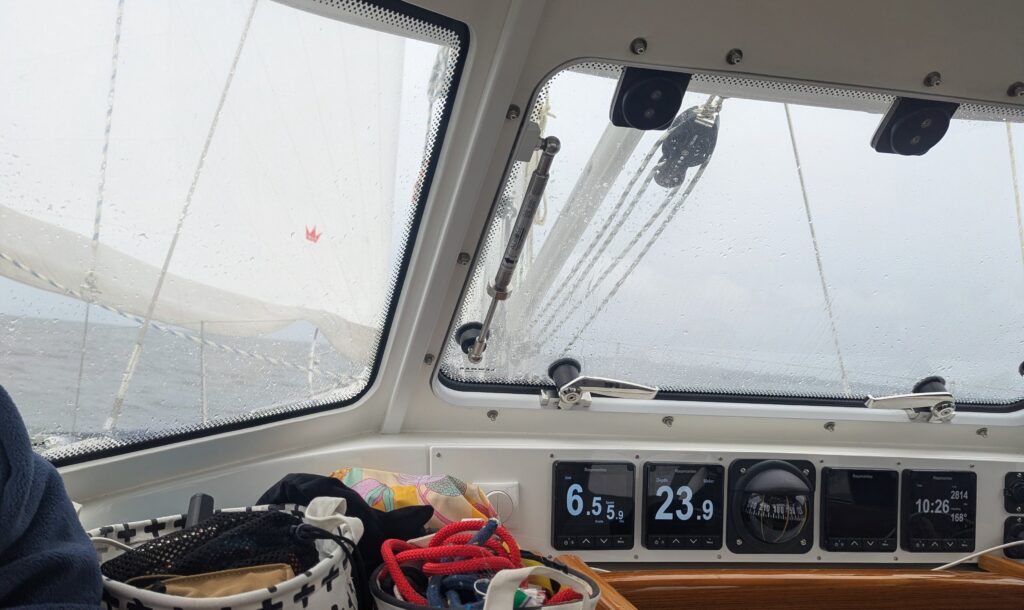
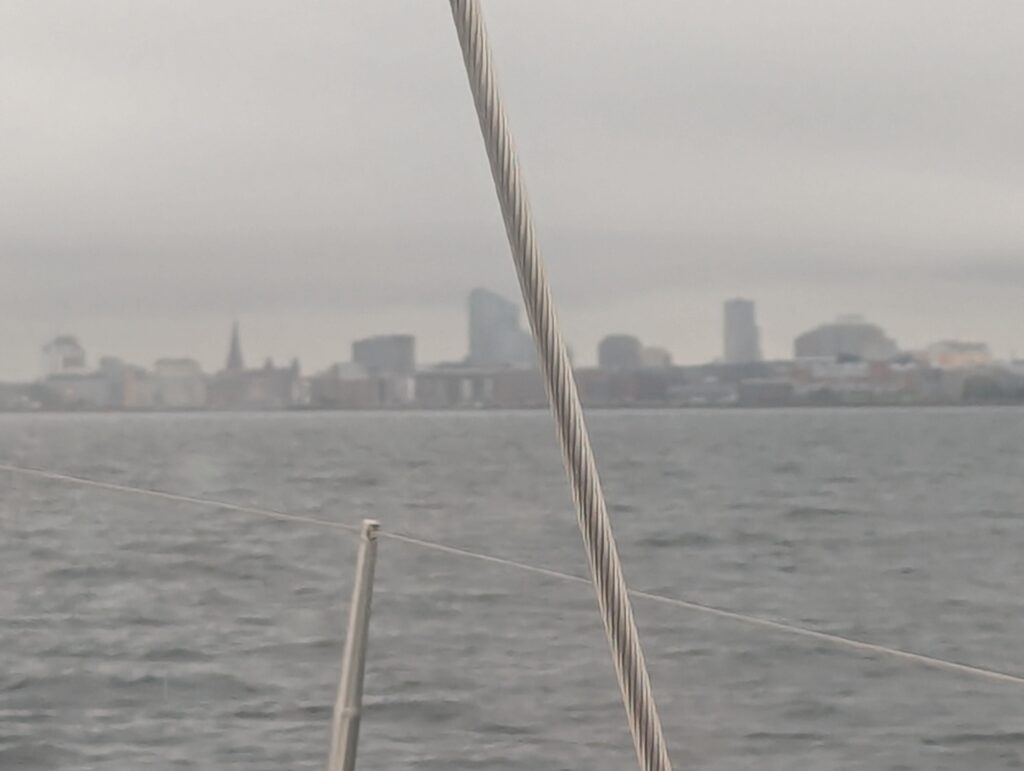
As we approached Malmö, we expected that we’d have to deal with a lot of shipping traffic because Malmö is across a very small strait from Copenhagen, one of the largest shipping ports in the world. What we found, however, was that the cargo ships were in shipping lanes. We stayed outside of the shipping lanes (where we belong) and there was no issue at all. We also saw a “parking lot” of cargo ships just outside of Copenhagen. The ships wait there for a pilot boat to take them in to unload their cargo, or they wait outside where they don’t have to pay Copenhagen harbor fees before they load their ships inside the harbor.
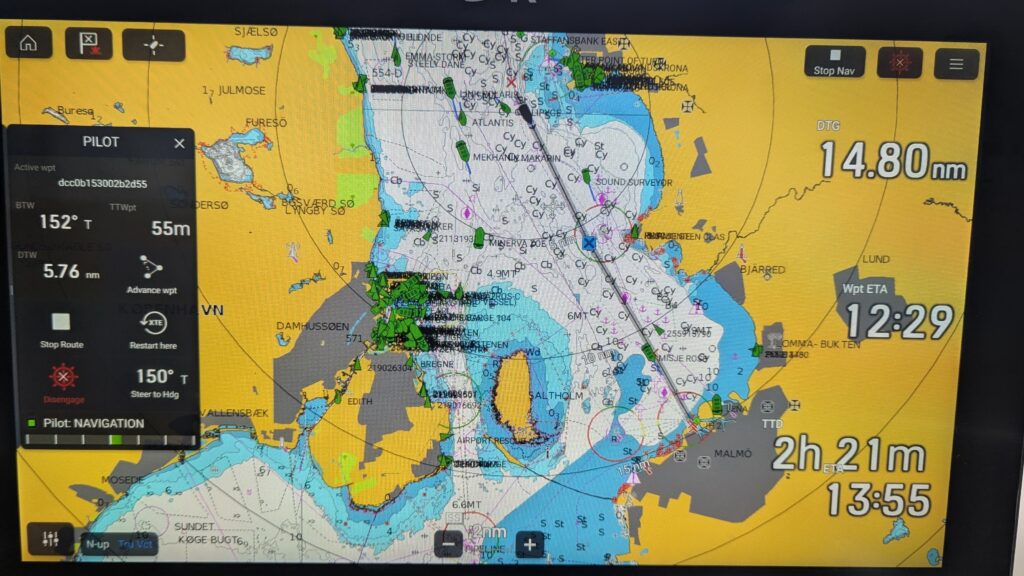
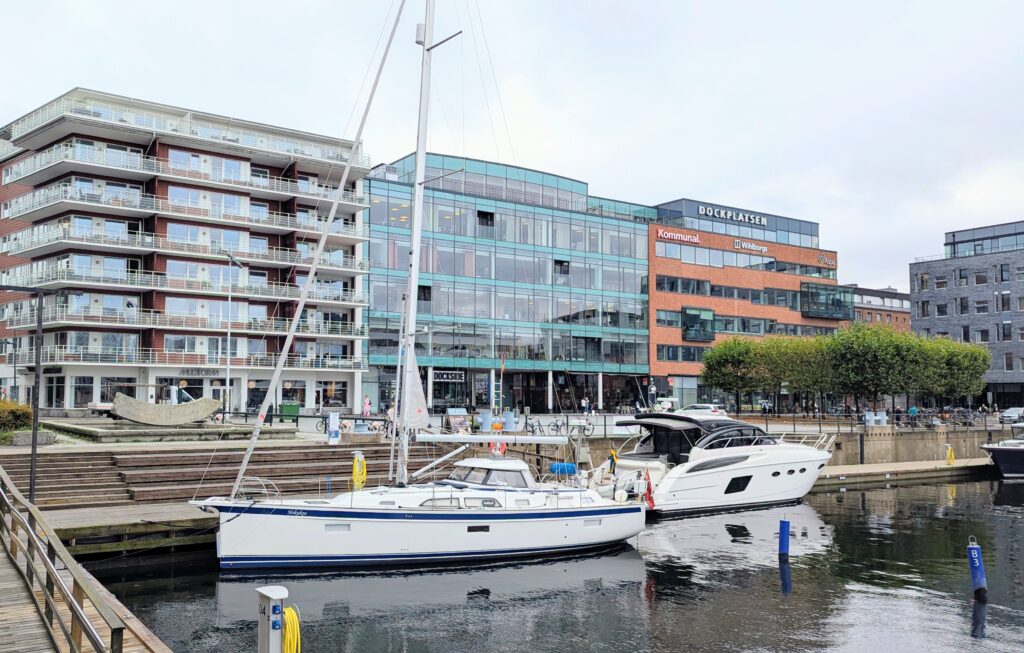
We ate at a very good Peruvian restaurant street-level in the blue building. We talked with the waitress and learned that she had come to Sweden from Peru to attend graduate school at the University in Malmö.
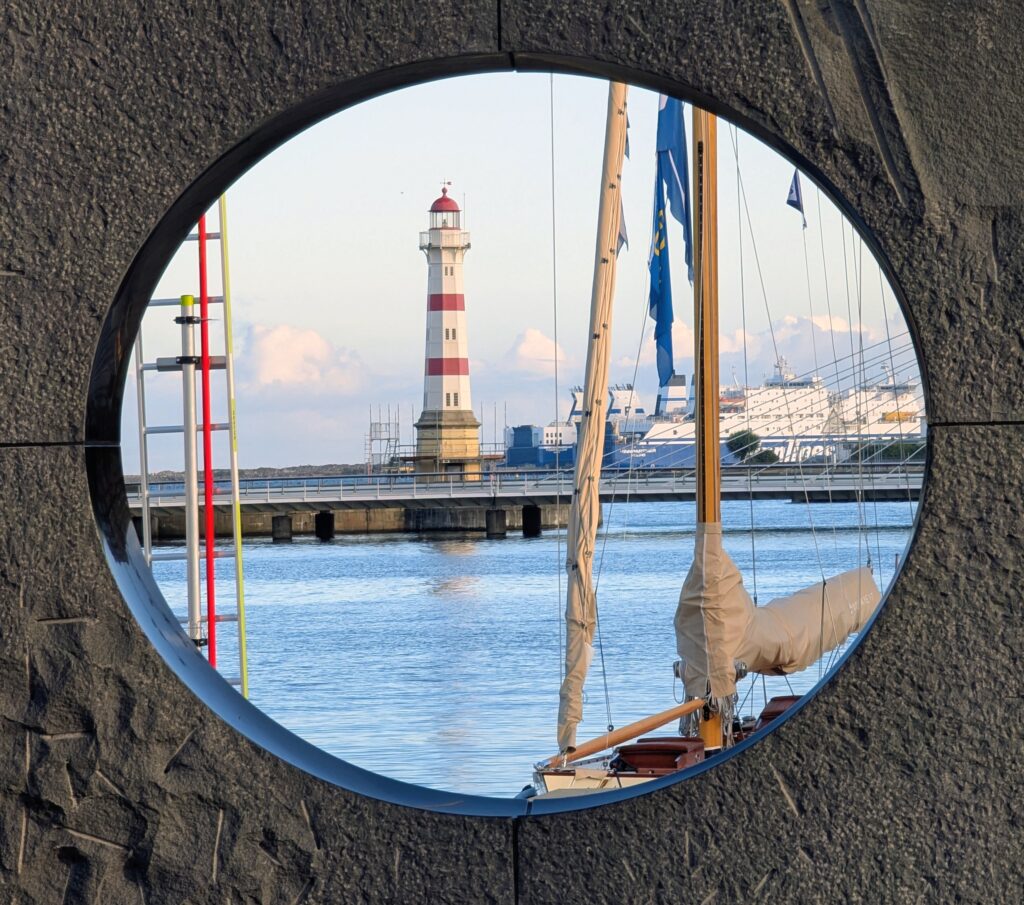
Höllviken (Falsterbokanalen)
Shortly after we departed Malmö, we sailed under the Öresund Bridge, a very large bridge that connects Malmö to Copenhagen. We’ve read about this bridge, watched videos of it, and drove across it last year. It’s unique not only because it is very long, but because a large portion of it dives under water into a tunnel before it comes above land again in Copenhagen. There are several marine traffic lanes for going under the bridge, with the middle two lanes being reserved for cargo ships.
Sailing fast on our way to the Öresund Bridge.
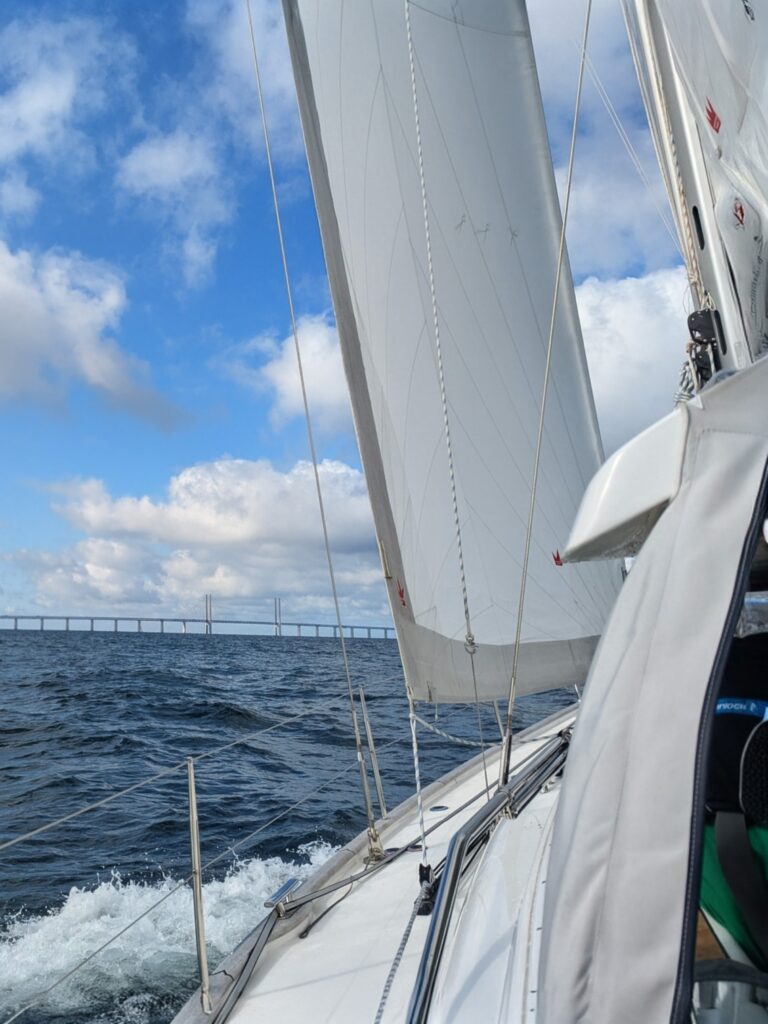
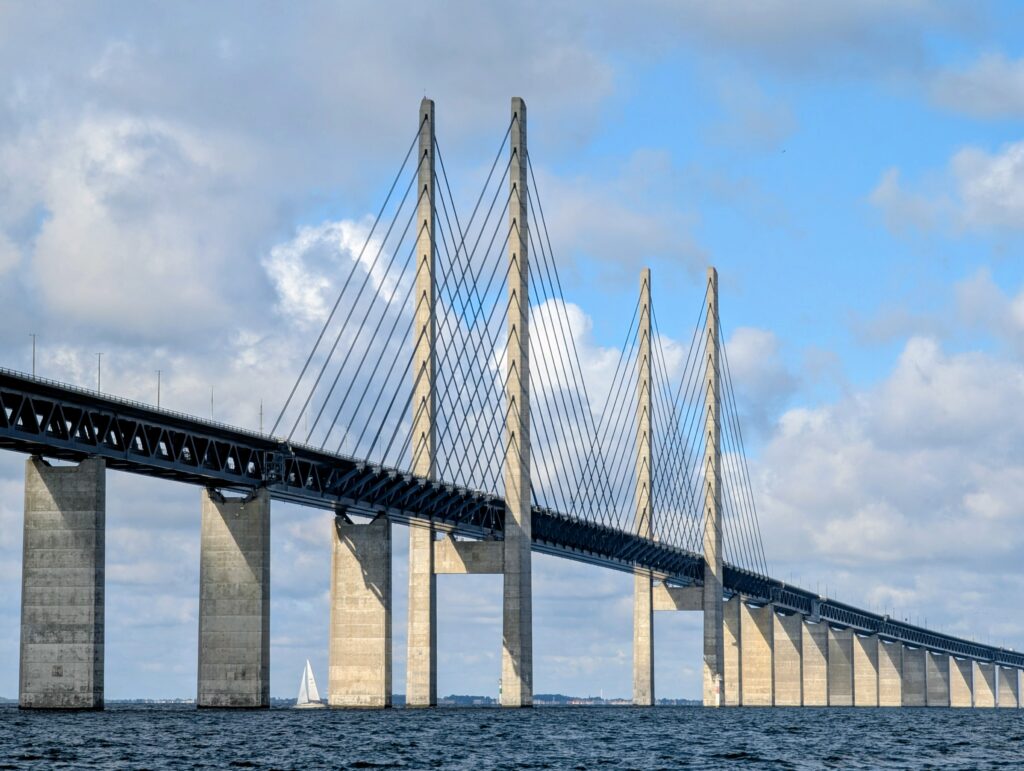
Falsterbokanalen is 1-mile canal that cuts across the very south of Sweden into the Baltic Sea. There are no locks in the canal, but there is a low bridge that is opened for boat traffic about every two hours. We spent a night in the marina at Höllviken so that the next morning we could be waiting just outside the bridge at 9 a.m. for the scheduled opening.
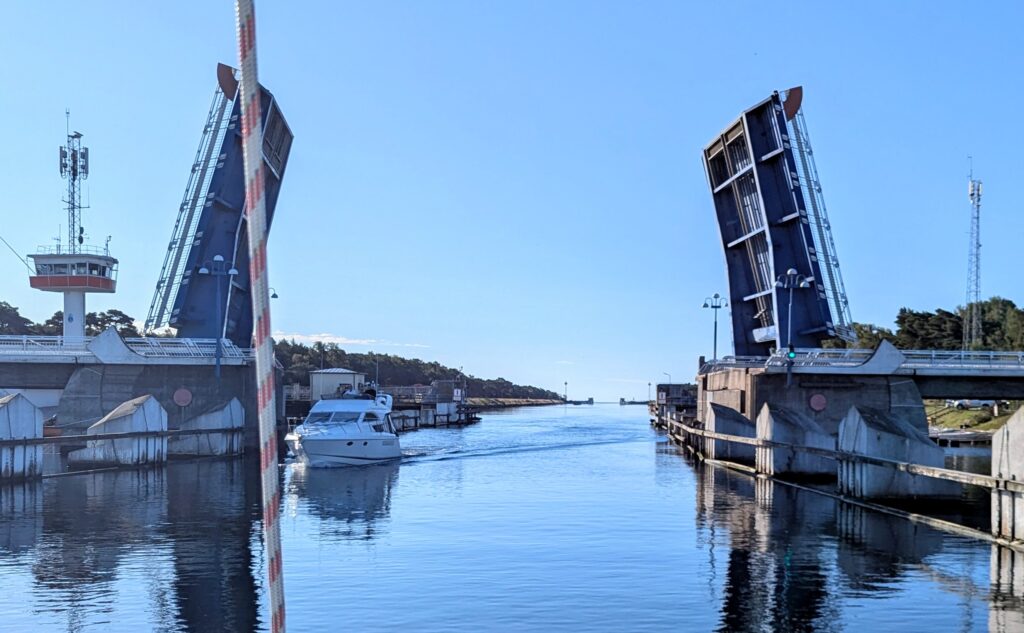
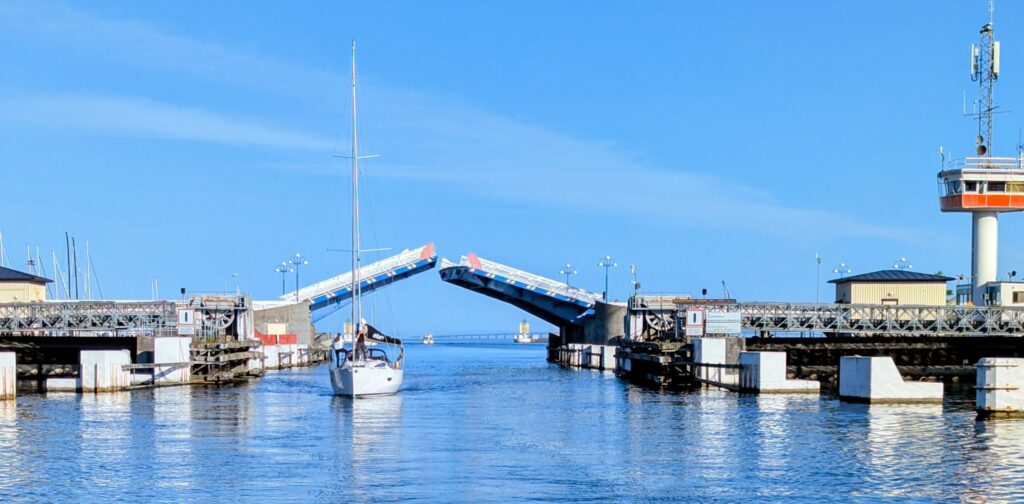
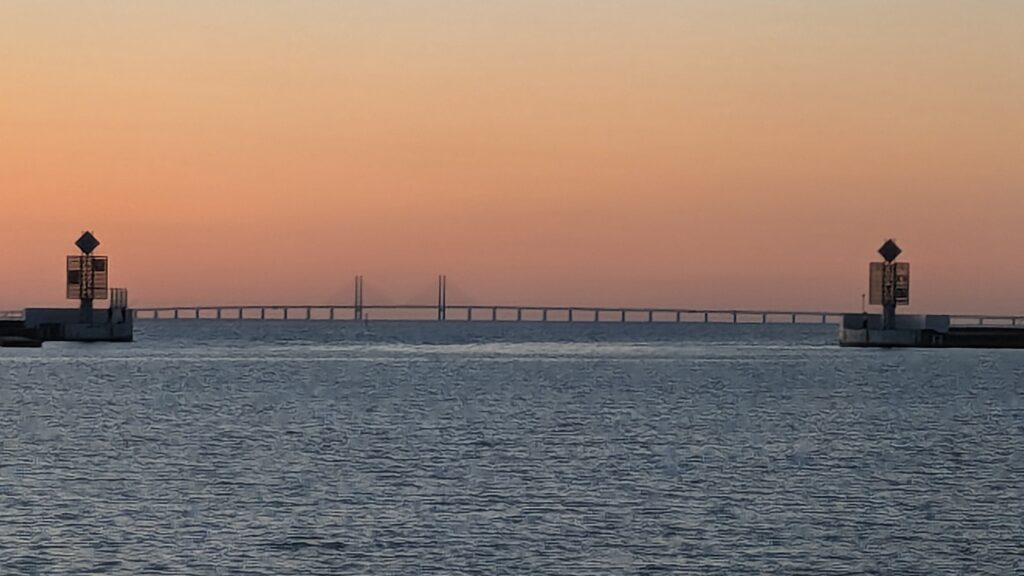
Ystad
Much of central Ystad is “old town,” with cobbled streets and beautiful facades on the buildings.
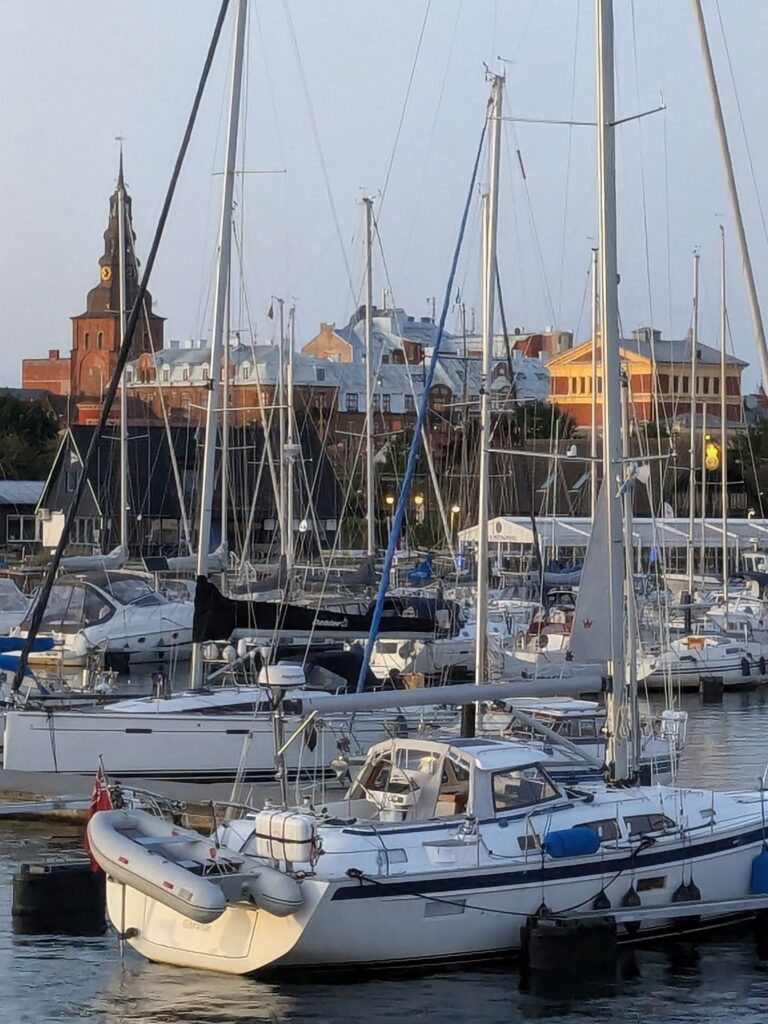
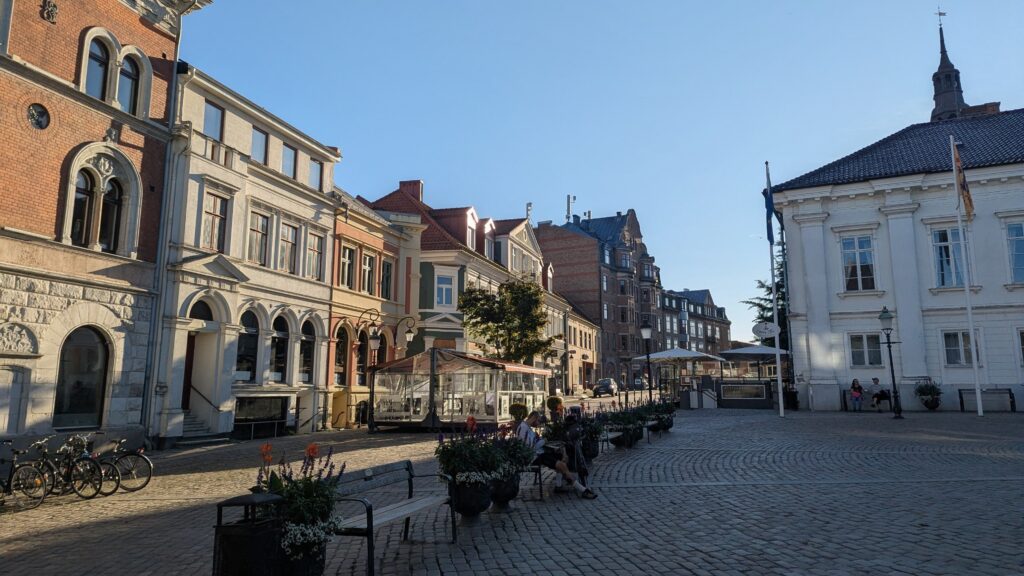
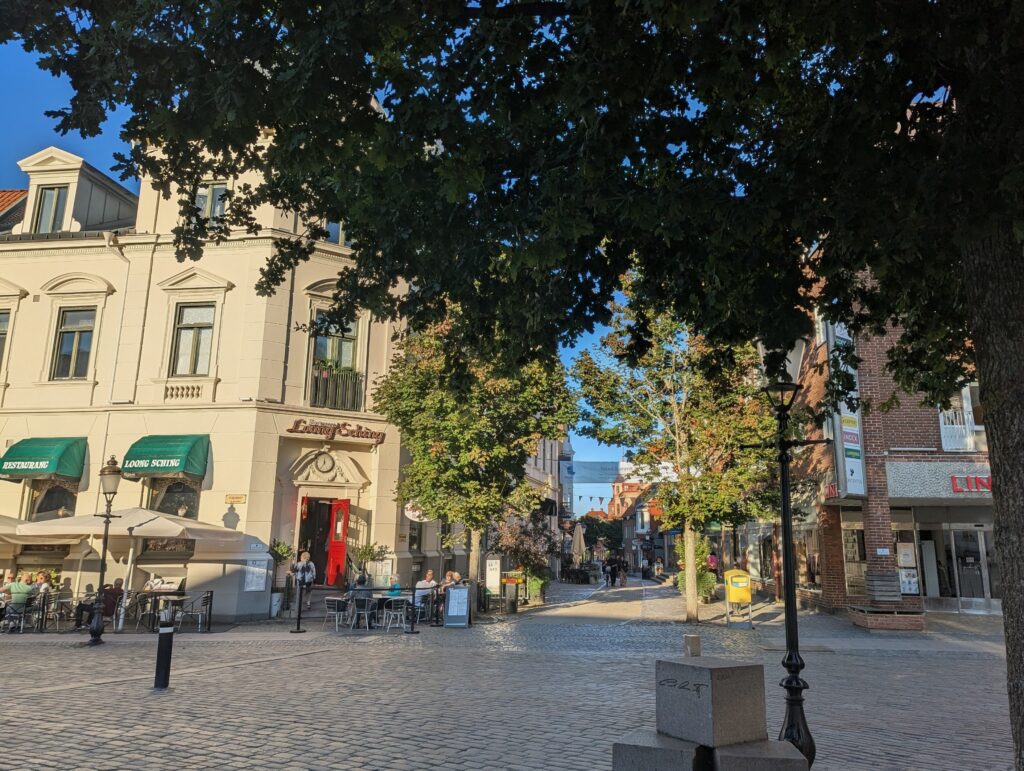
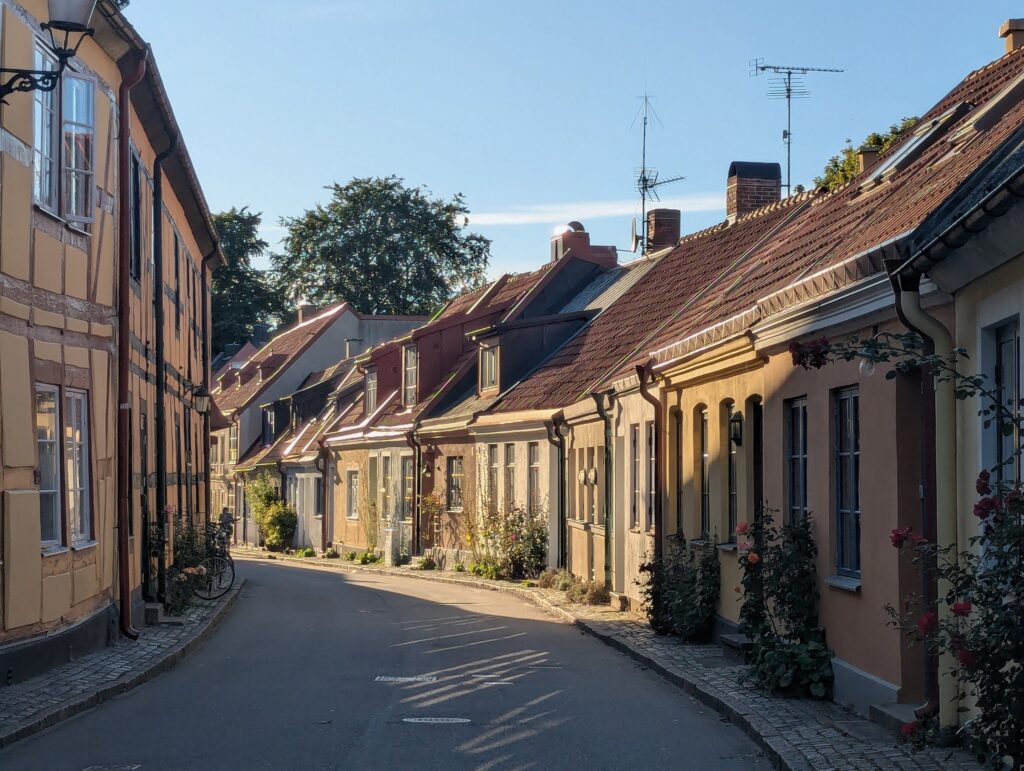
Simrishamn
Arriving in Simrishamn (pronounced “Sim-ris Hamn”; “Hamn” means port) placed us clearly in southeast Sweden; prior to that we were in south or southwest Sweden. Getting there felt like a bit of a milestone because we are storing the boat for the winter a little further north in southeast Sweden, and we had to travel 300 miles with 11 stops within about 2 weeks. Simrishamn was another beautiful Swedish town with lots of old-town charm.
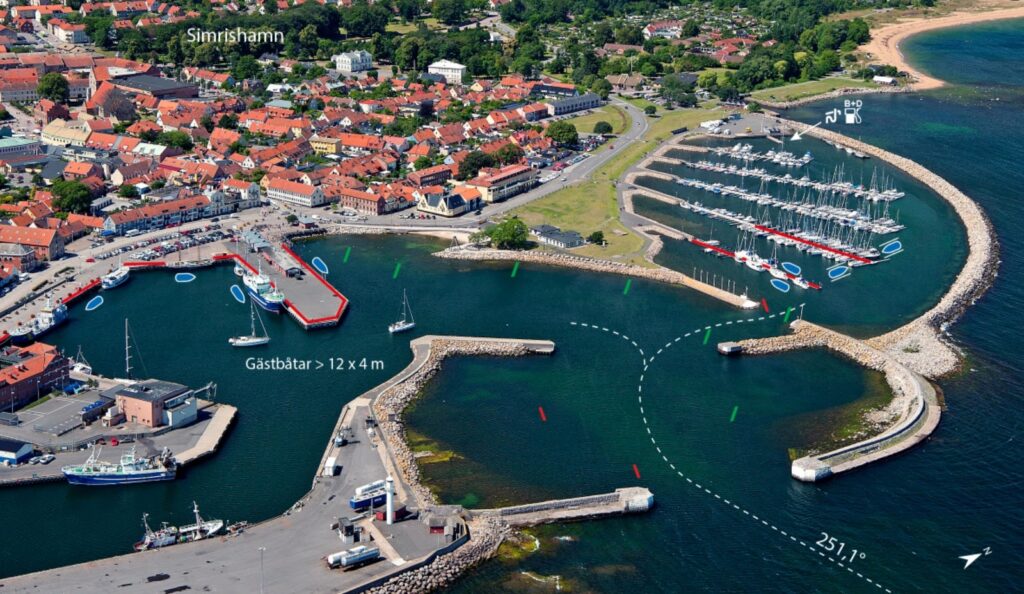
Our Harbors Guide shows the unique layout of the marina in Simrishamn. Most recreational boats dock to the right, but it’s a bit shallow in that part of the marina. Boats that draw over 2 meters (6 feet) need to dock on the left side where fishing boats also dock (Hokukea draws 2.1 meters).
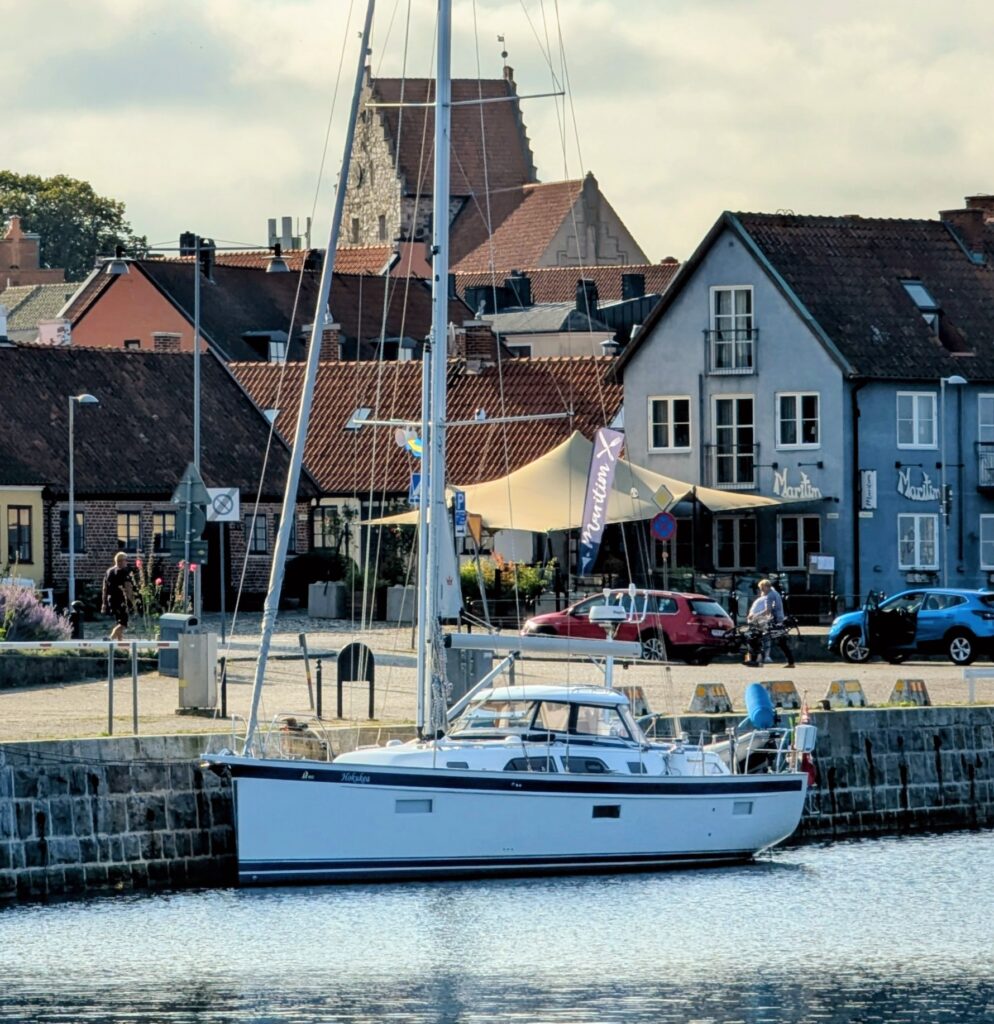
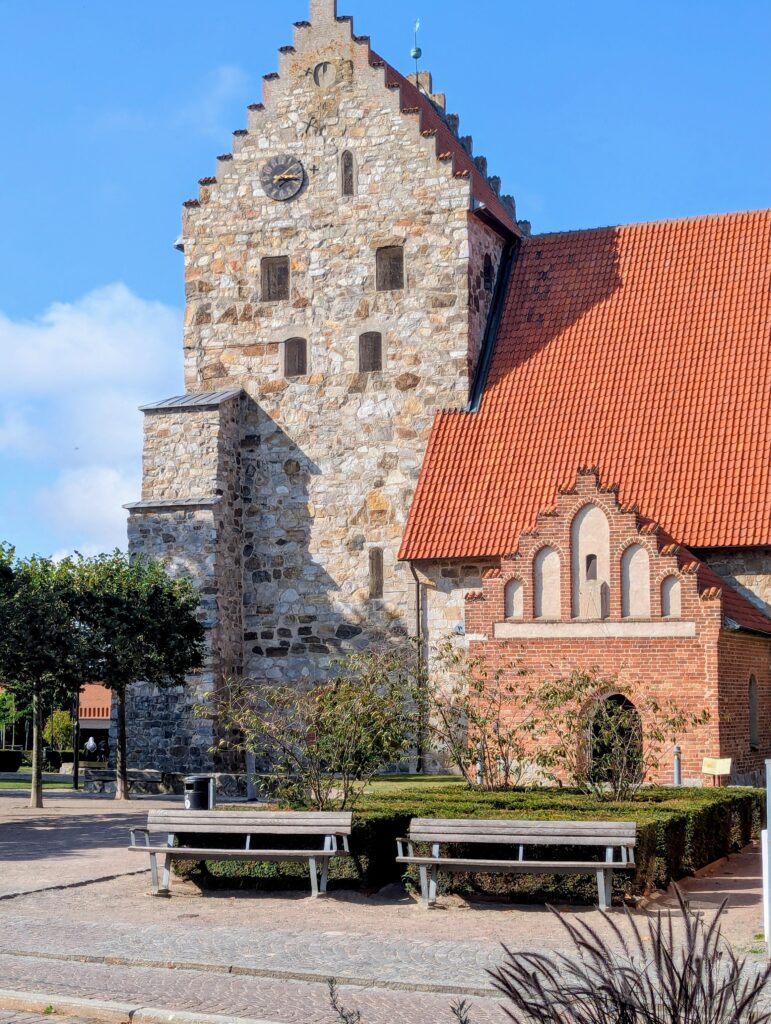
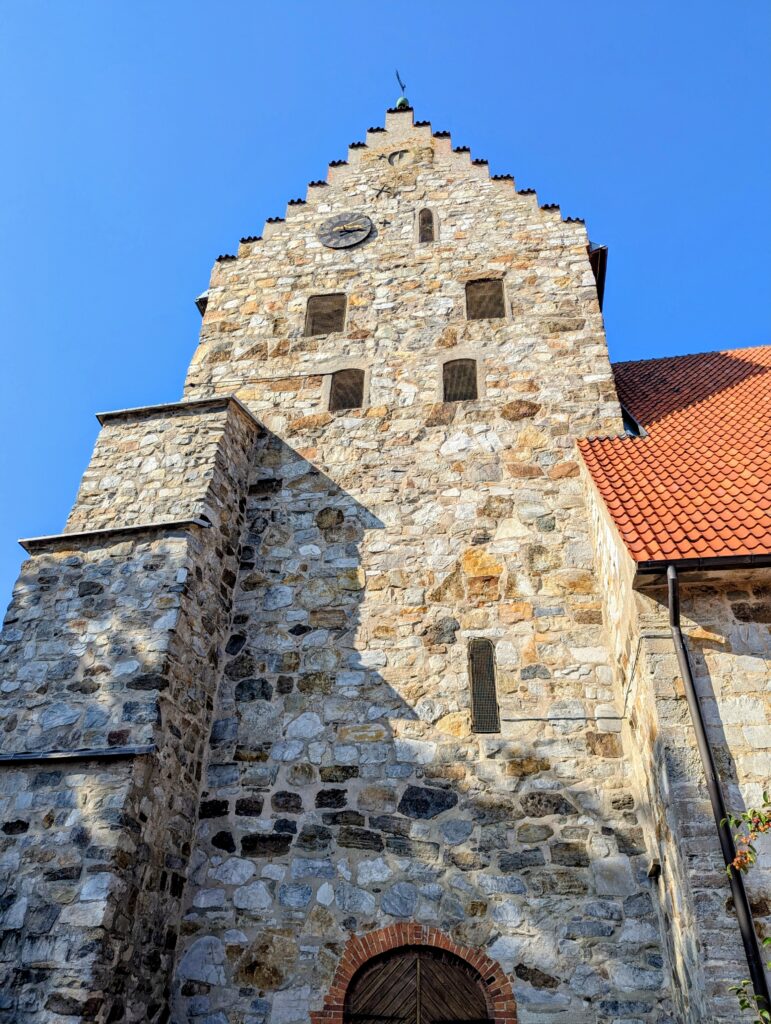
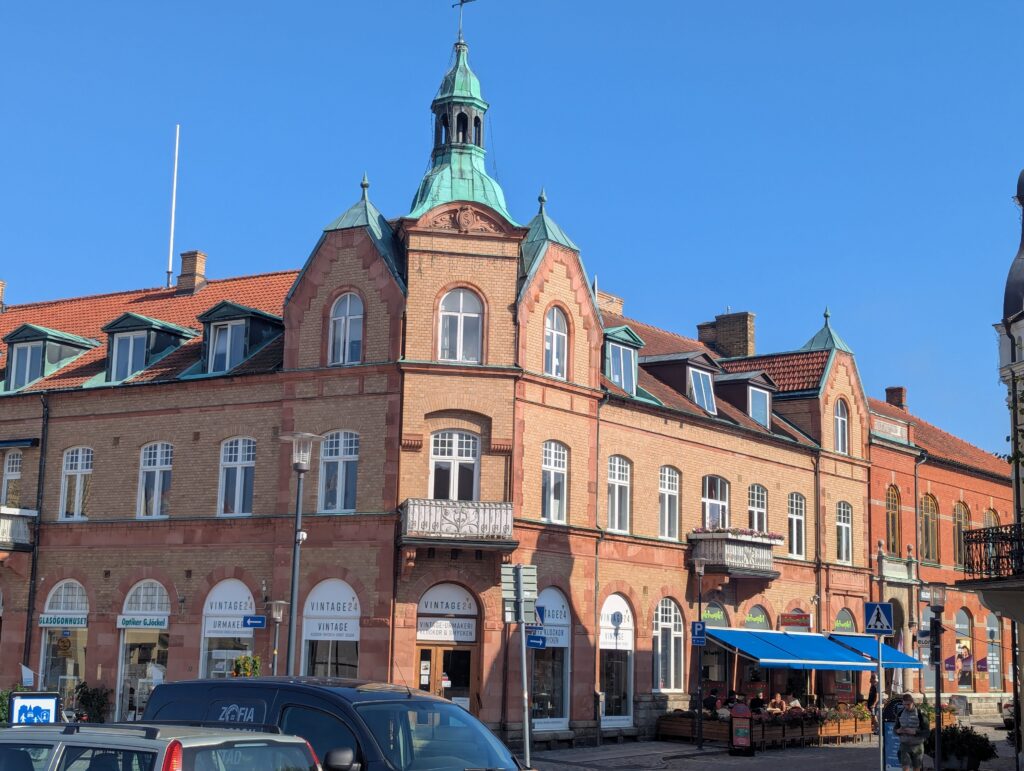
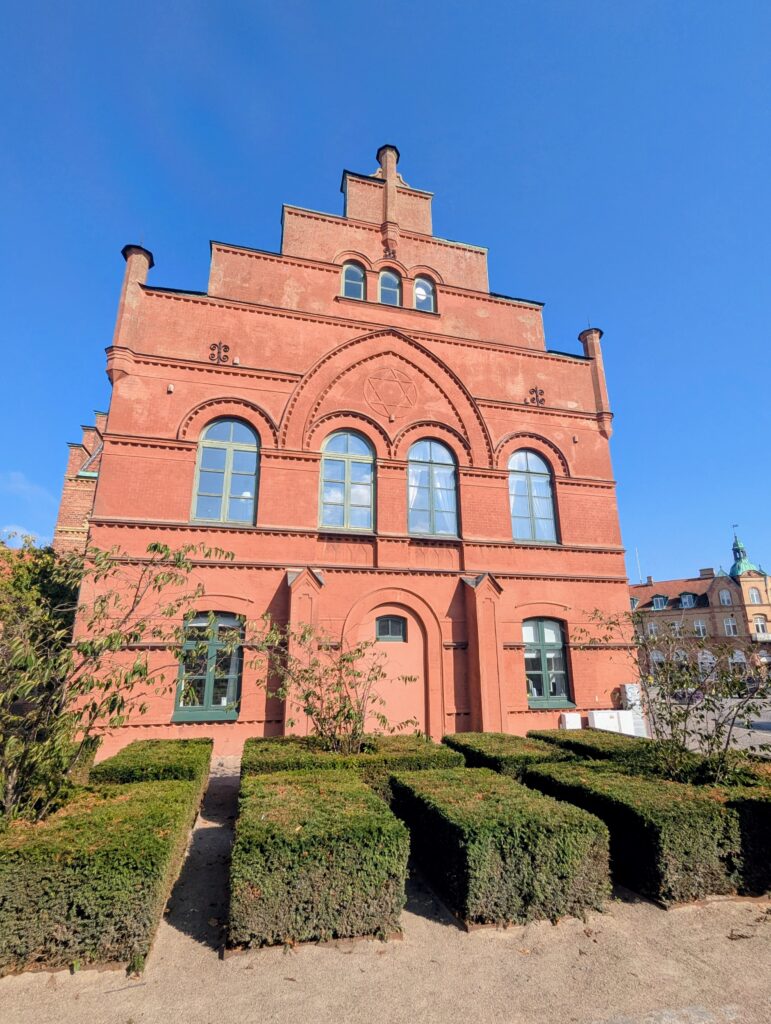
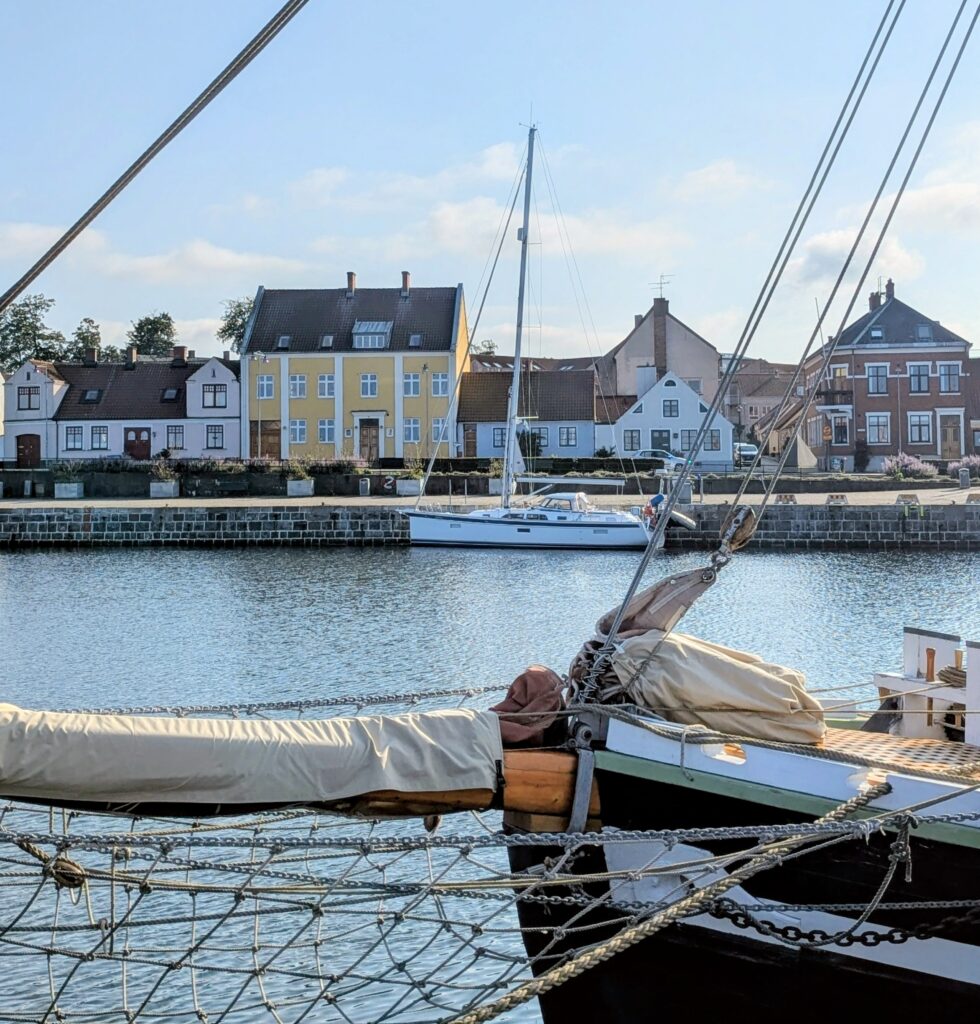
Sölvesborg
Sölvesborg looked much like the other pretty small towns in this part of Sweden. They also have a St. Nicolai church. This one dates back to the middle ages and has early 15th century frescos. The church also displays a “runestone” that was found in a nearby field and has been dated to the 6th century.
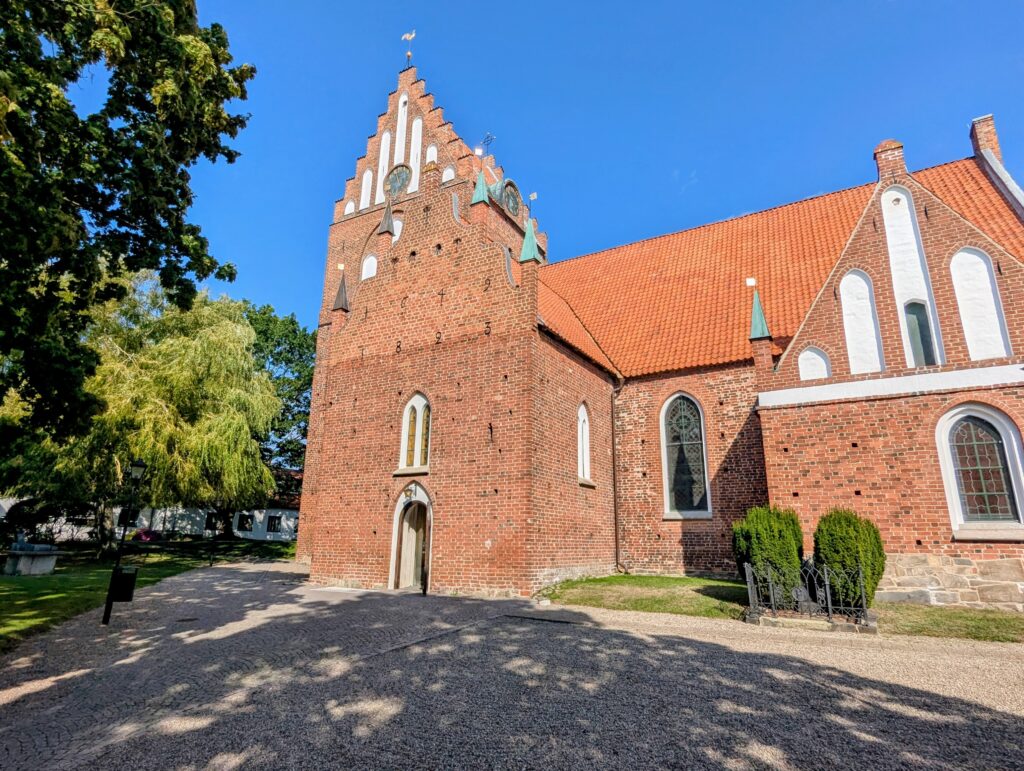
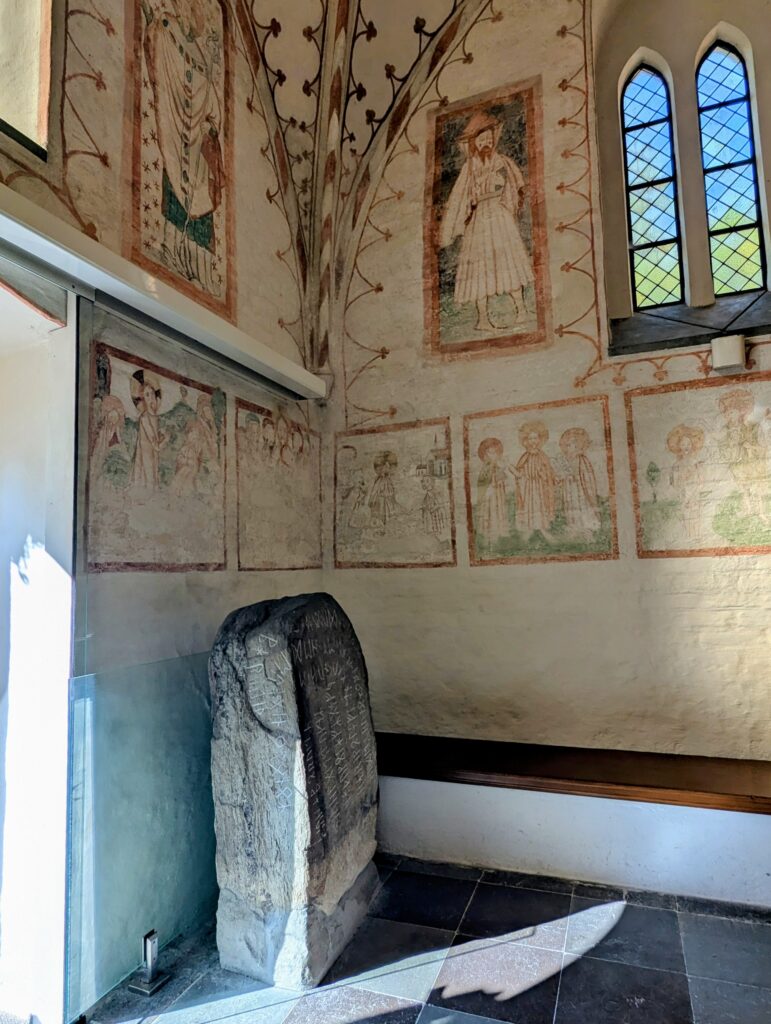
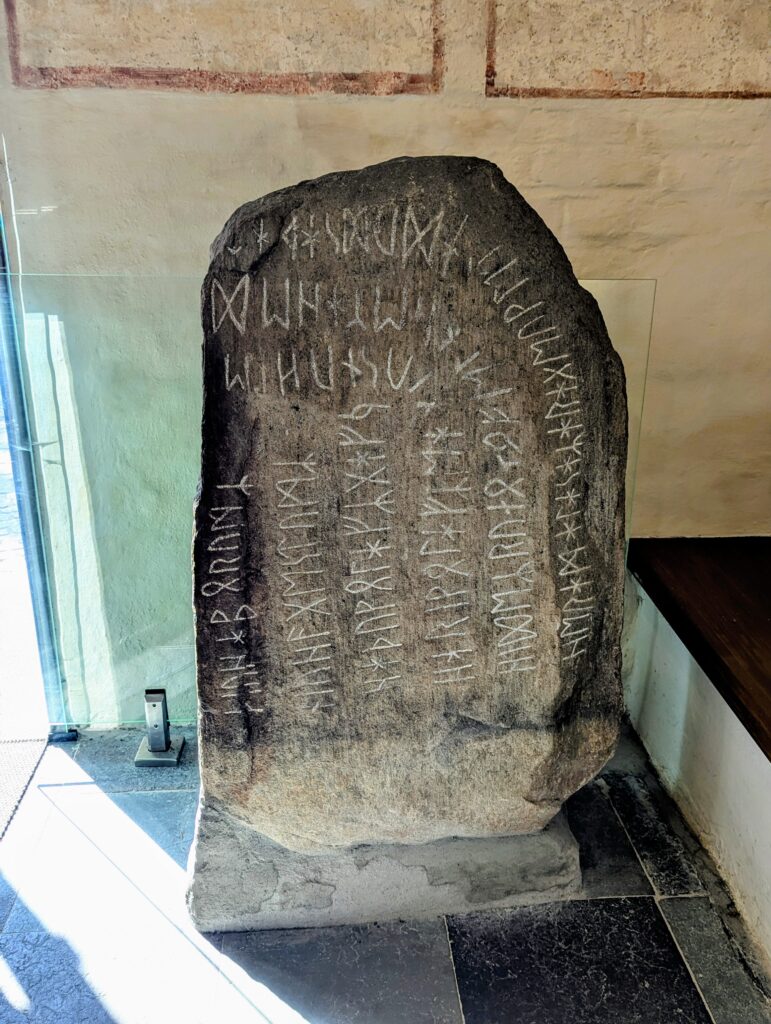
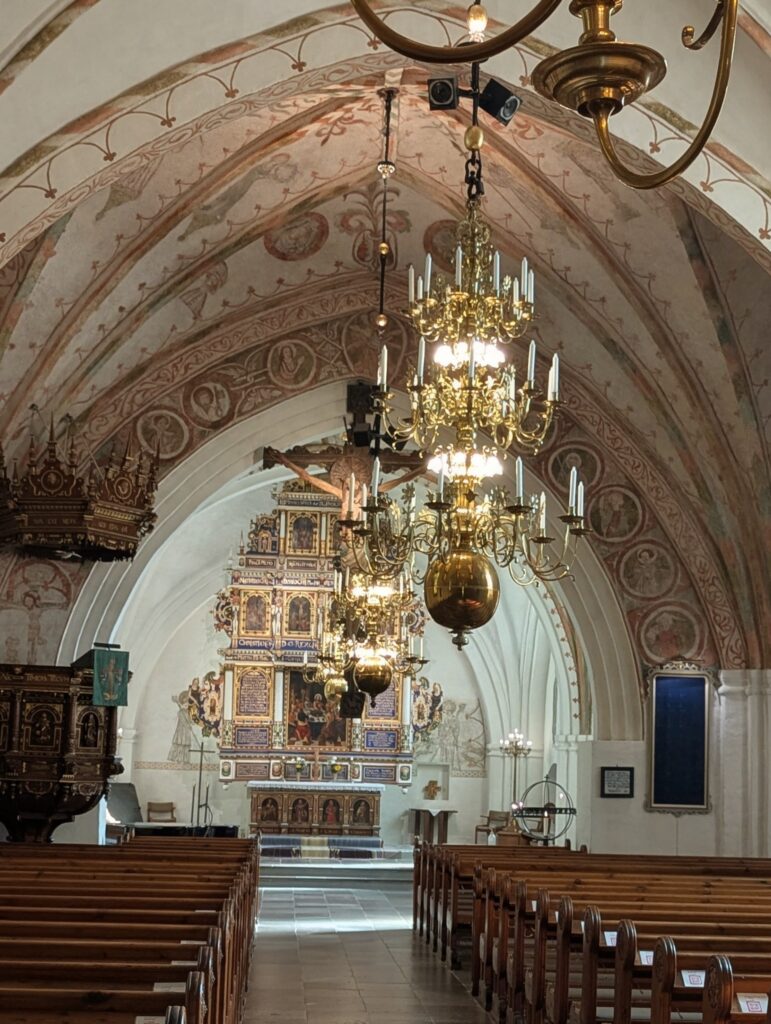
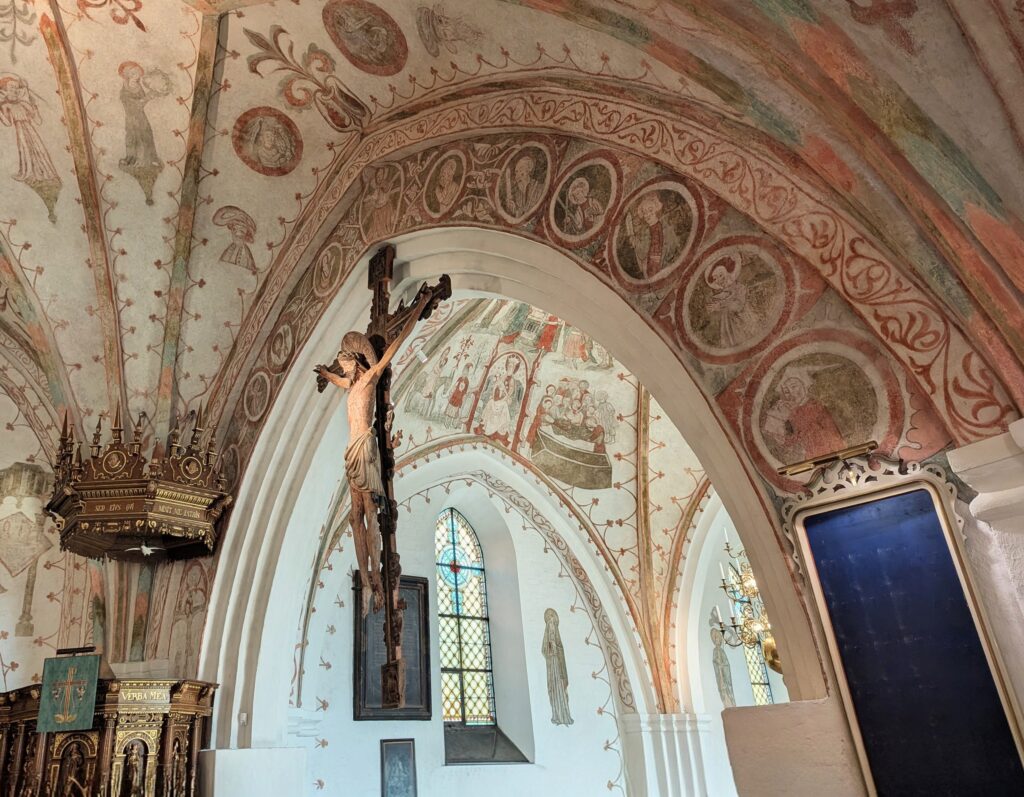
Karlskrona
Unlike the other “old town” Swedish towns of this area, Karlskrona is known for its history of naval ship building. They have a well-designed navy museum that focuses on the methods used to design and build the Swedish warships going back 500 years. Interestingly, they displayed numerous “models” of old warships that were used for planning and design, and also for communicating with foreign ship builders who did not speak Swedish.
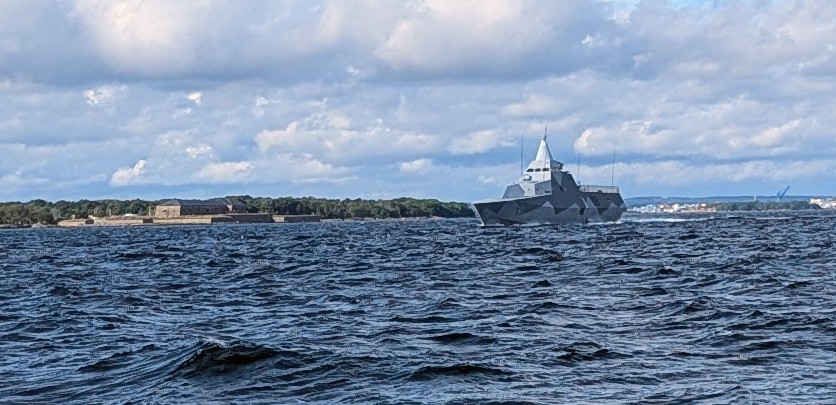
Karlskrona is still a large and active navy base. One of the warships came by to check us out as we were entering Karlskrona.
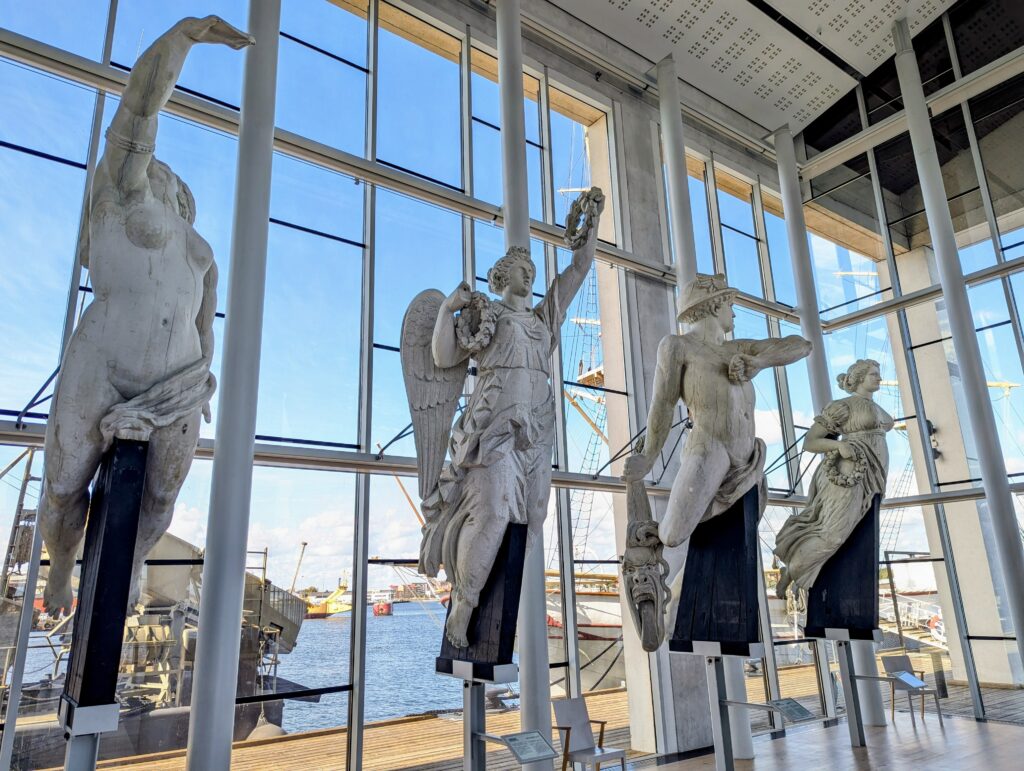
We’ve been noticing temperatures dropping and trees losing their leaves. Fall is in the air!
Torhamn
Torhamn was just a 3-hour sail from Karlskrona, but it positioned us for our final passage (44 miles; 8 hours) up to Kalmar. The harbor is very small and has a tight entrance…. and just to challenge us a bit more, the layout of the entrance had been modified and didn’t match our harbor guide. There’s not much of a town in Torhamn, but there’s a little cafe at the marina that has nice lunches and is bustling on a Saturday night with live music and lots of singing.
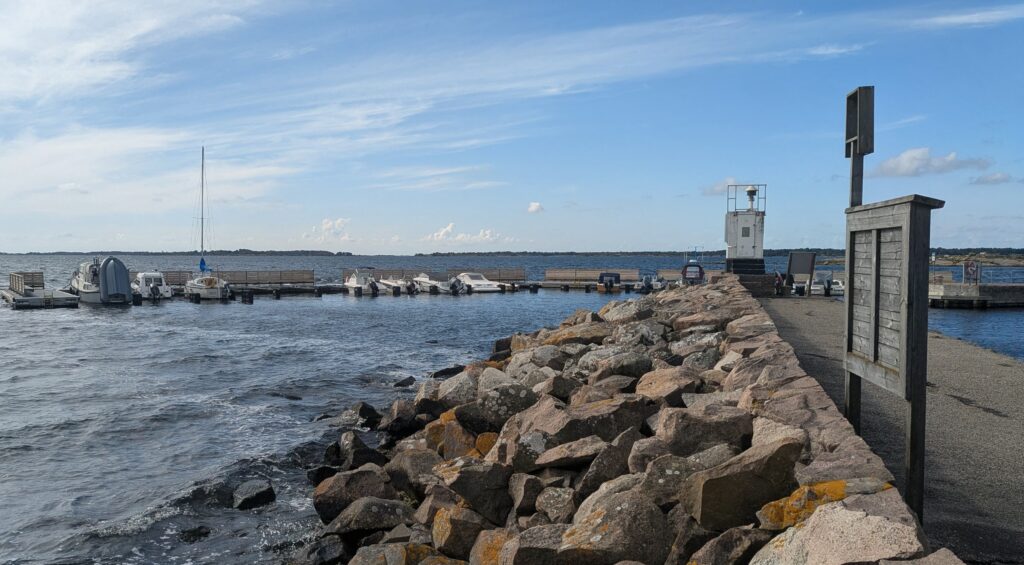
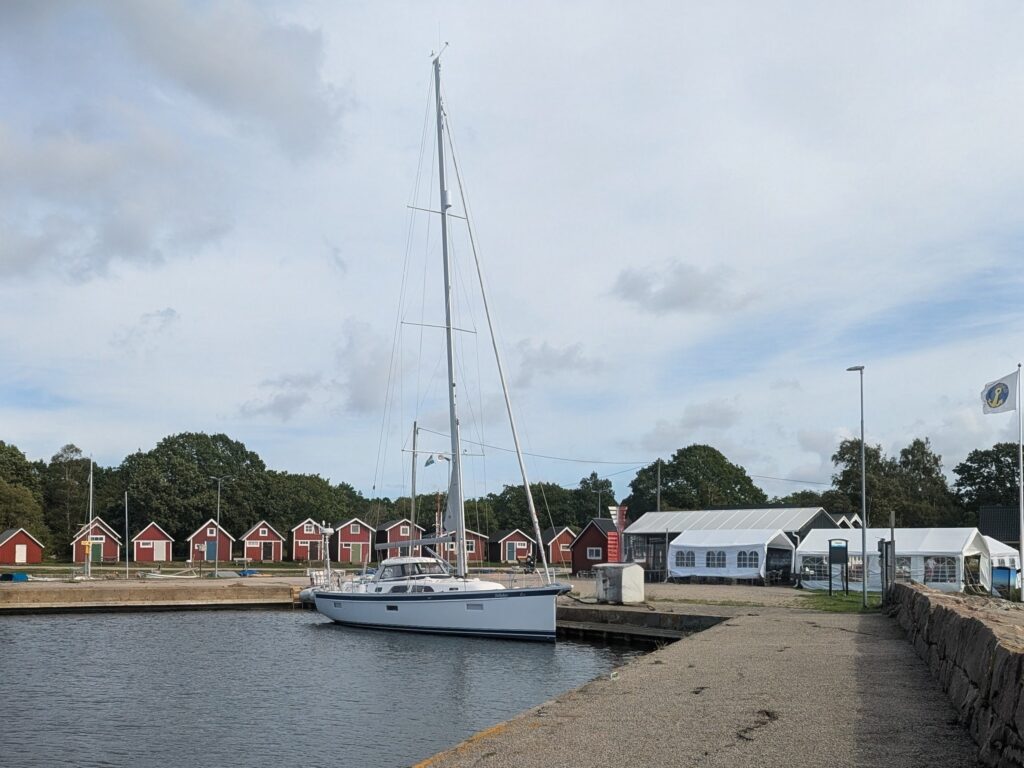
Kalmar
We had lots of great motor-sailing up the Kalmar Straight to Kalmar (the winds were not quite strong enough to sail without the motor). There were only a few other sailboats along the way, and no cargo ships to deal with.
It rained a bit on our way to Kalmar. We have a special camera on a spreader that is helpful for looking forward in low-light conditions.
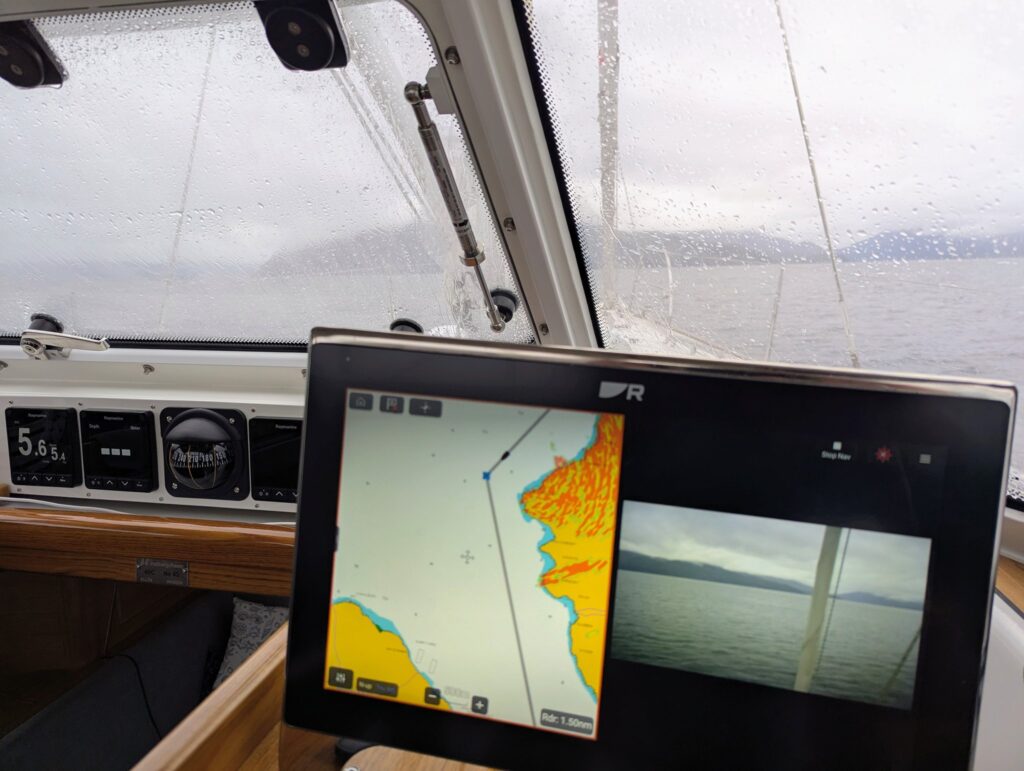
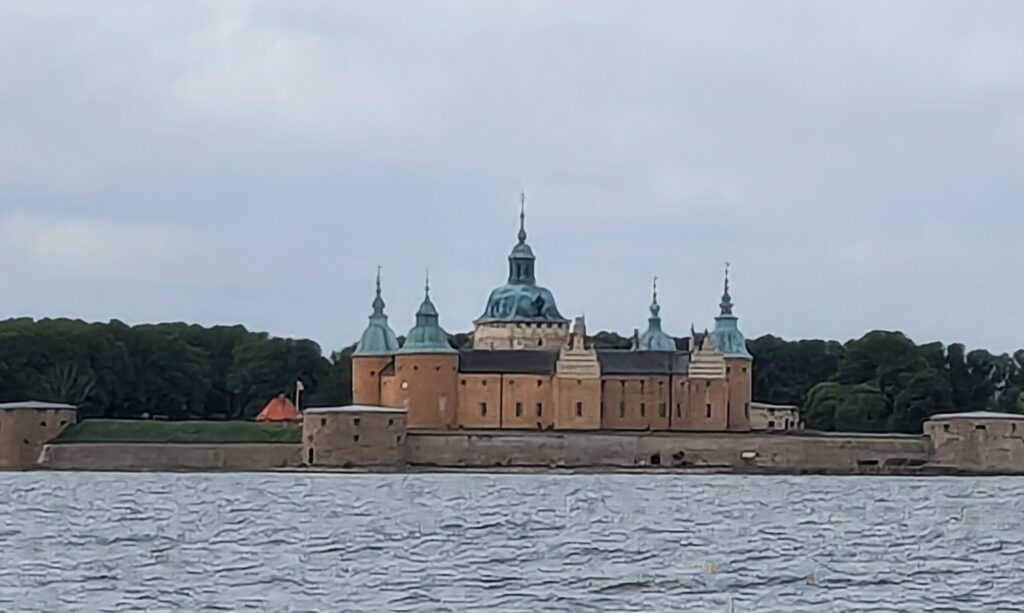
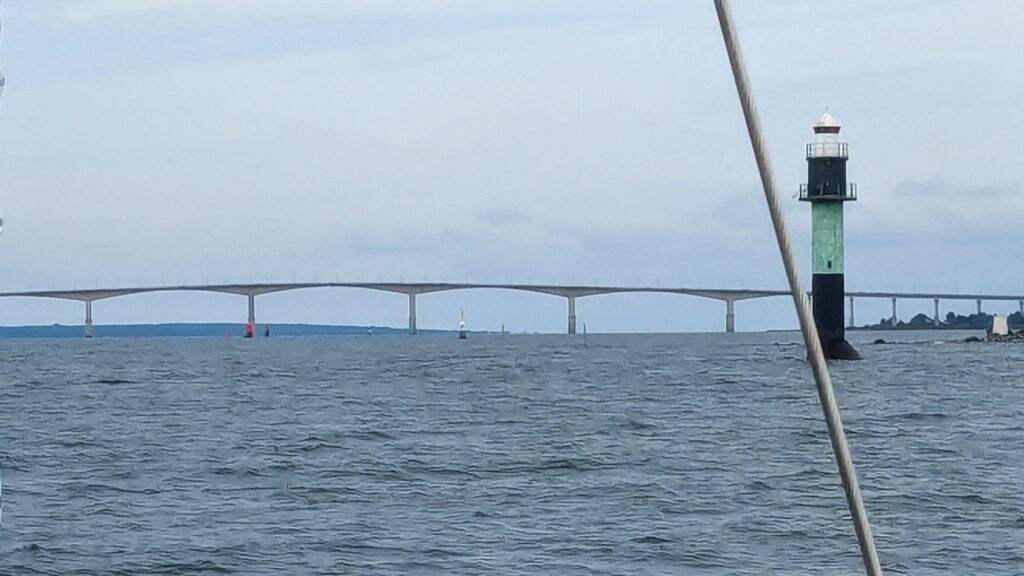
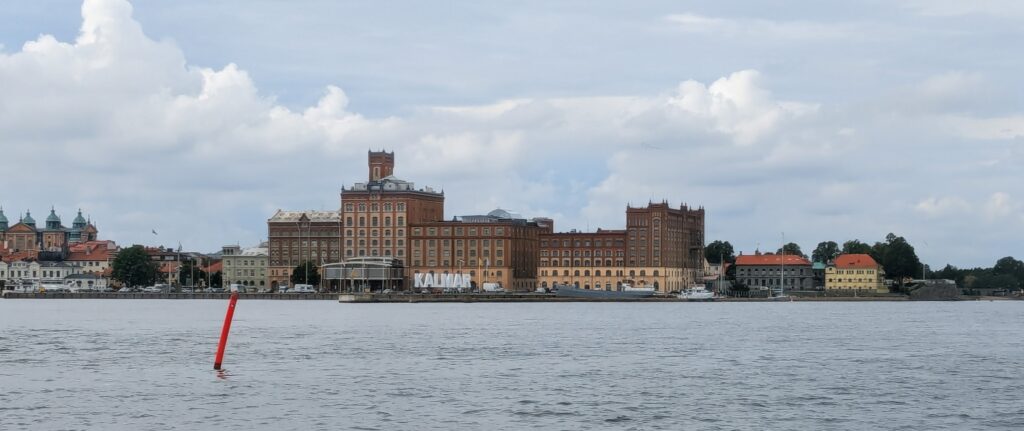
There were some strong winds forecasted for the upcoming days, so although it was late in the season, many of the spots where we wanted to dock in the marina were already taken — however, there was still room for us!
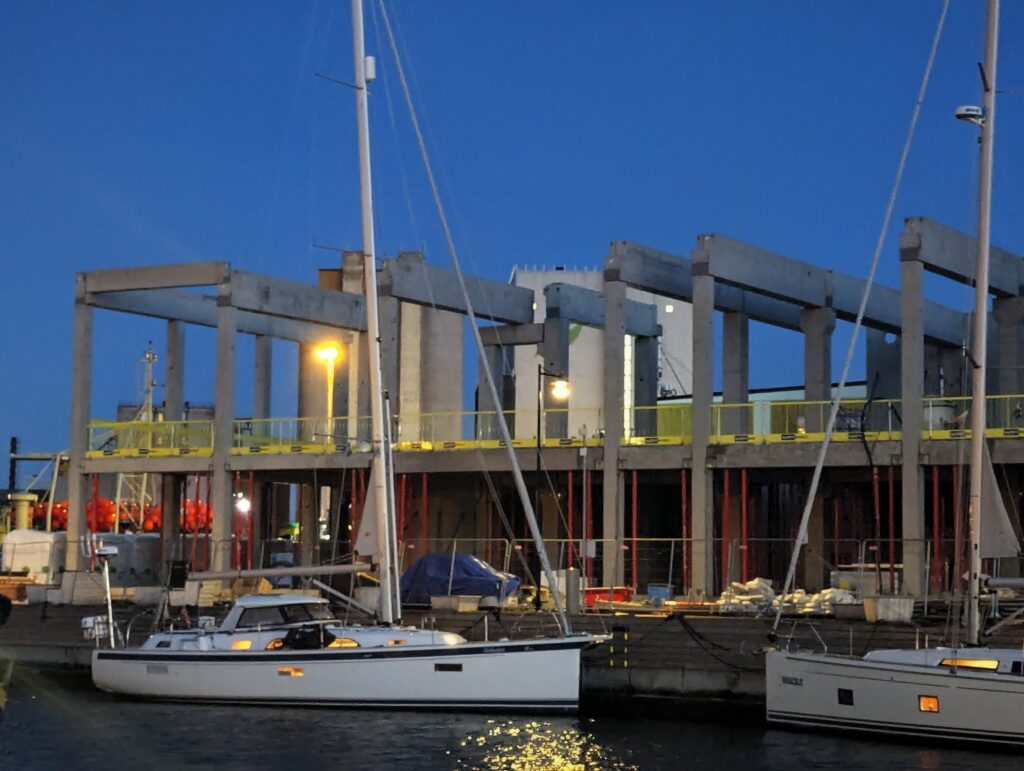
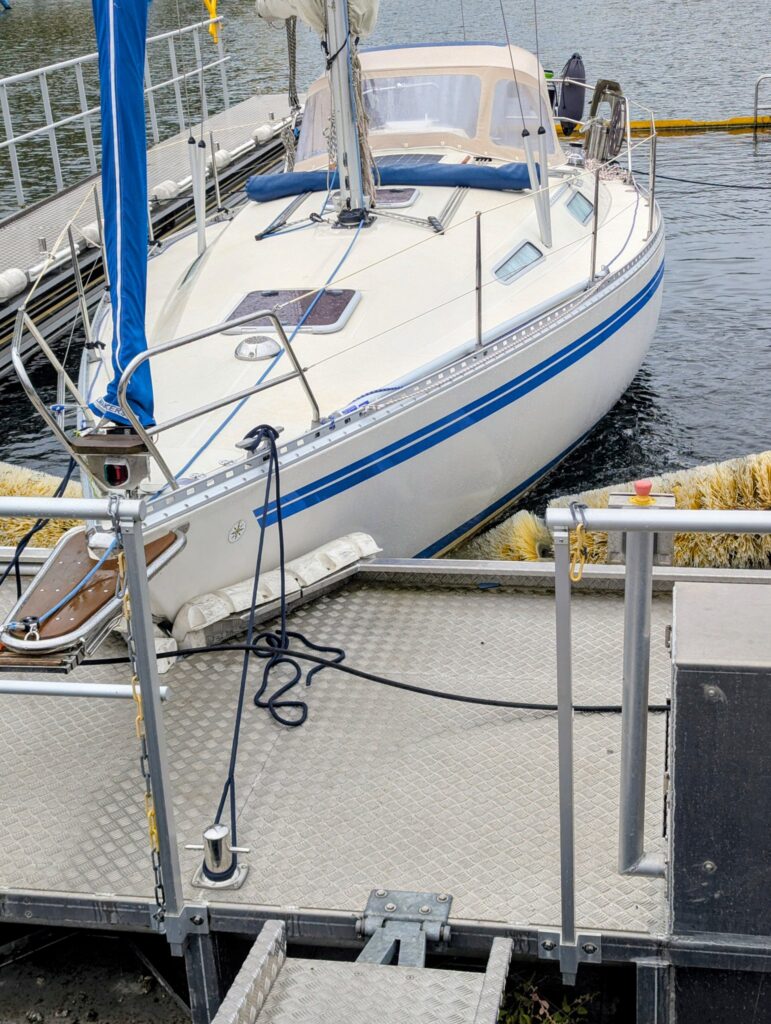
Kalmar Guest Harbor has an automated bottom washing berth! It’s much like an automated drive through car-wash. This is a good option to having a diver clean the bottom because the water in Sweden is cold.
Kalmar is a very interesting town that is rich in Danish & Swedish history, but initially we were focused on preparing our boat for winter storage (cleaning, deflating, and stowing our dinghy; washing and vacuum packing towels, linen, and clothing; cleaning the boat interior; emptying and cleaning the refrigerators; emptying, defrosting and cleaning the freezer; emptying the water tanks; stowing boat items; etc.). We planned for 3 days to do this, and that’s what it took.
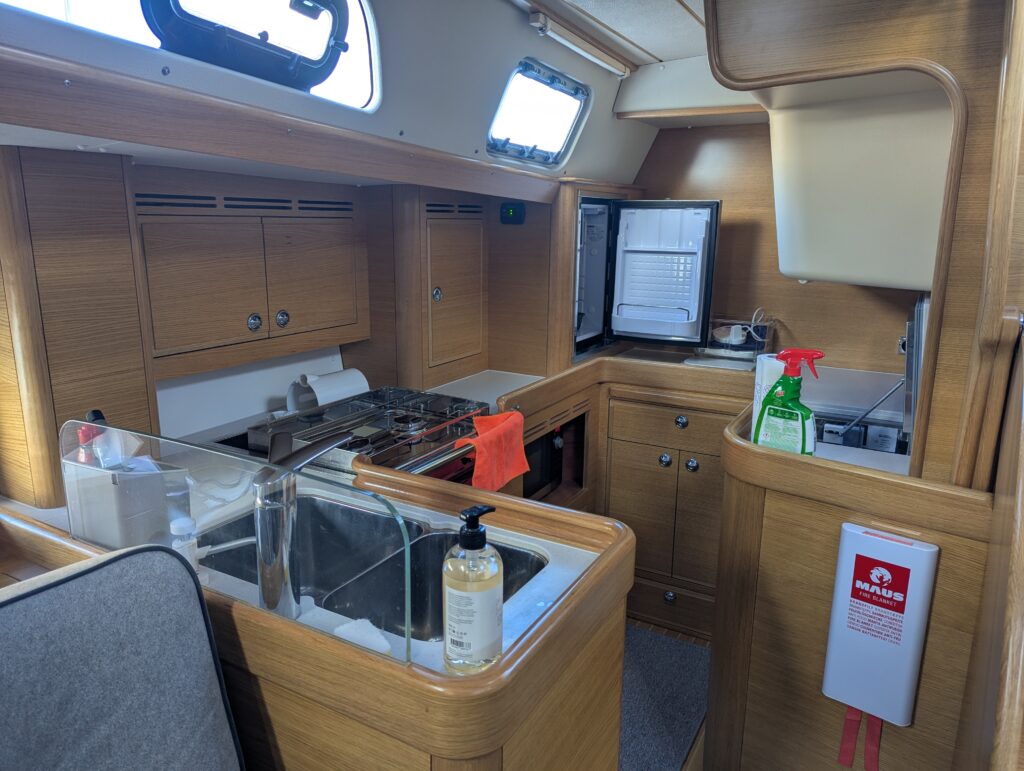
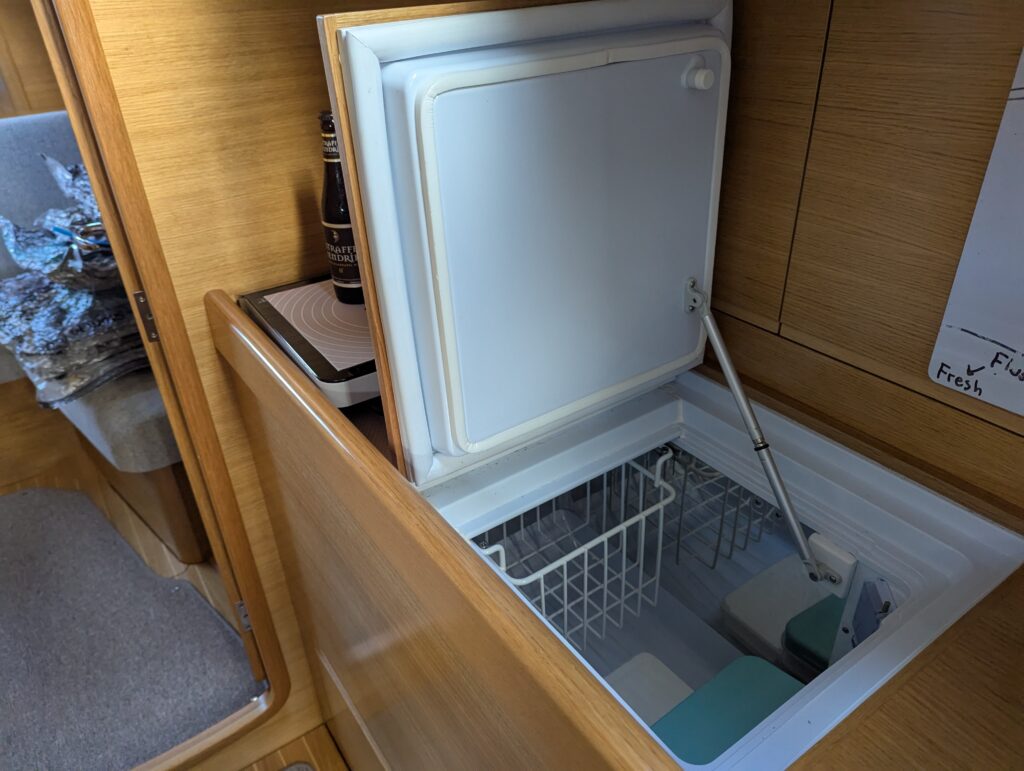
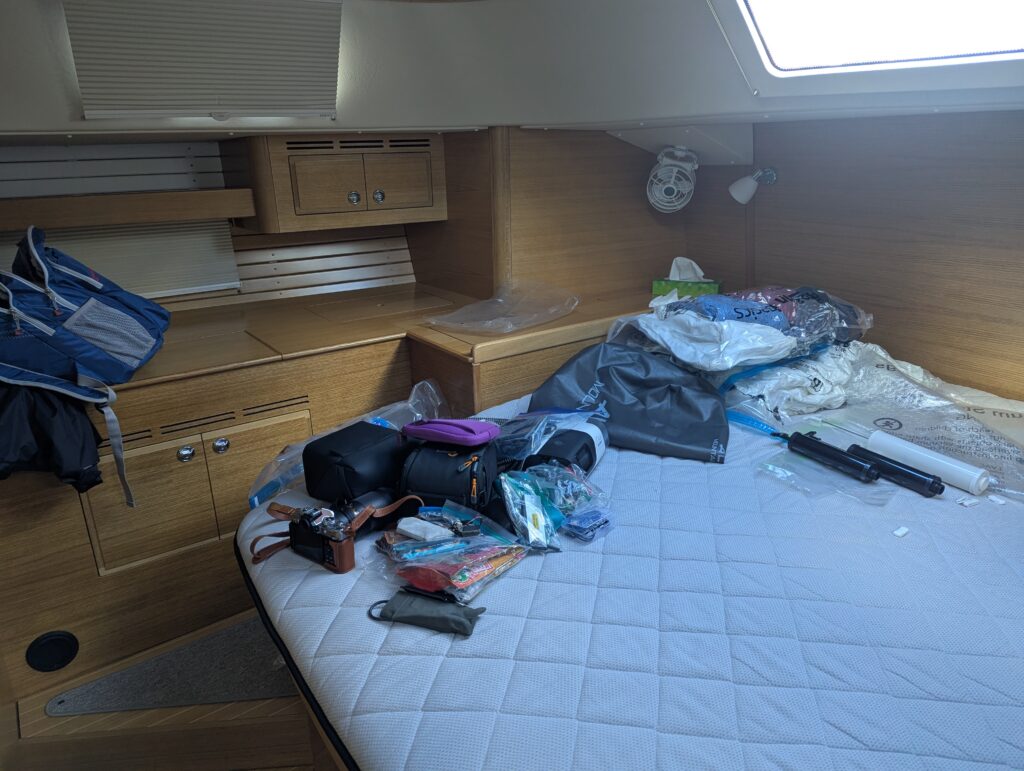
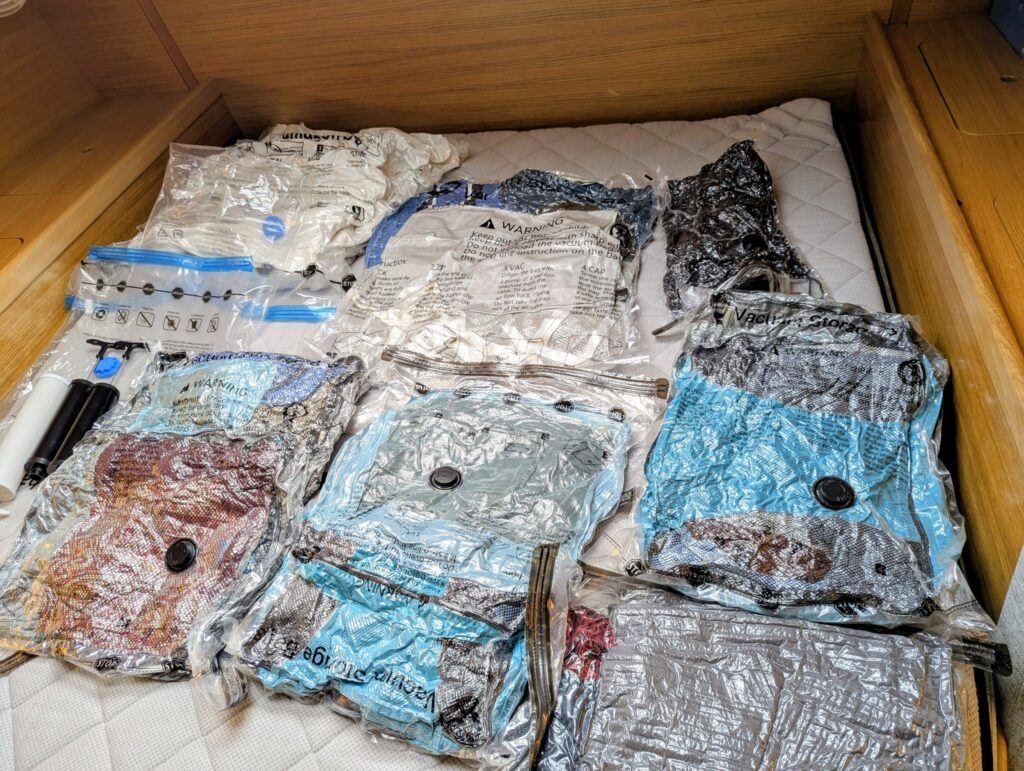
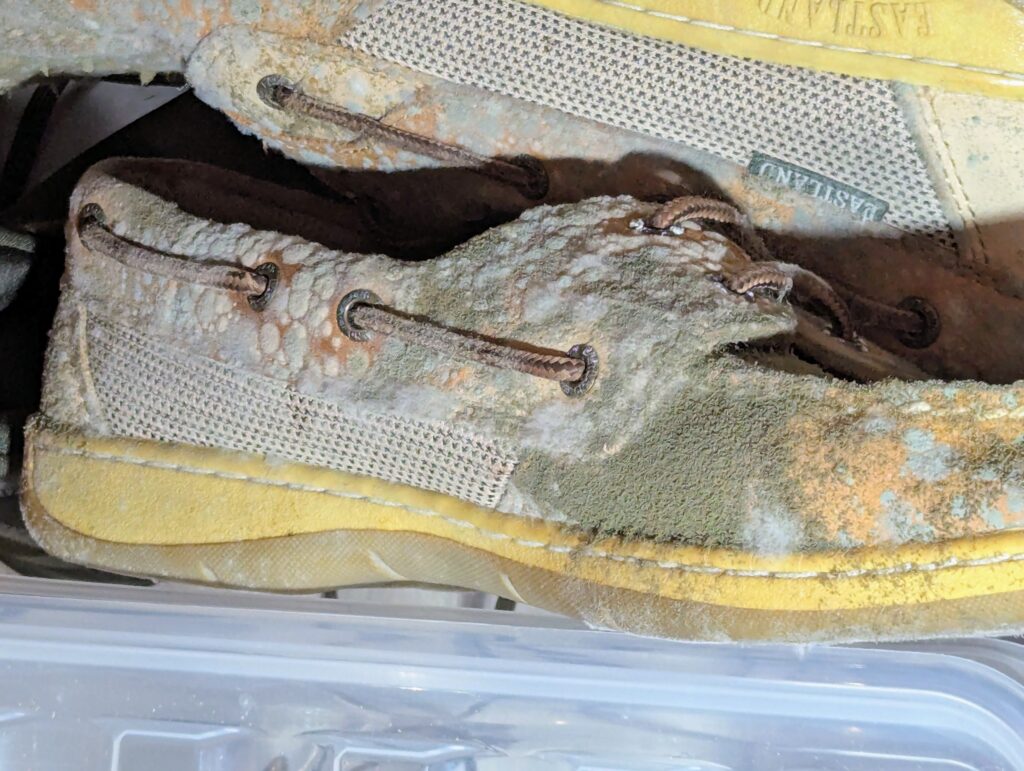
As we went through our storage areas on the boat, we found a few surprises. These are MJ’s spare sailing shoes. They were stored in a cool, damp area against the hull. Ewwwwwww! We didn’t even try to save them.
We checked in with the marina company that was going to store our boat and made sure that we were still on track to lift the boat out of the water as scheduled. They sent their rigger to review our rigging so he could prepare for mast removal. We worked with the rigger to remove the sails and reorganize some of the rigging so it would be out of the way for mast removal. Finally, with the rigger aboard, we moved the boat to the commercial harbor (next to the guest harbor where we were initially docked) near the crane and storage warehouse. We left the boat and took our duffels and checked into a nice hotel conveniently located in the harbor.
Removing the battens and folding the headsail. It was nice (and rare) to have a large dock to work on.
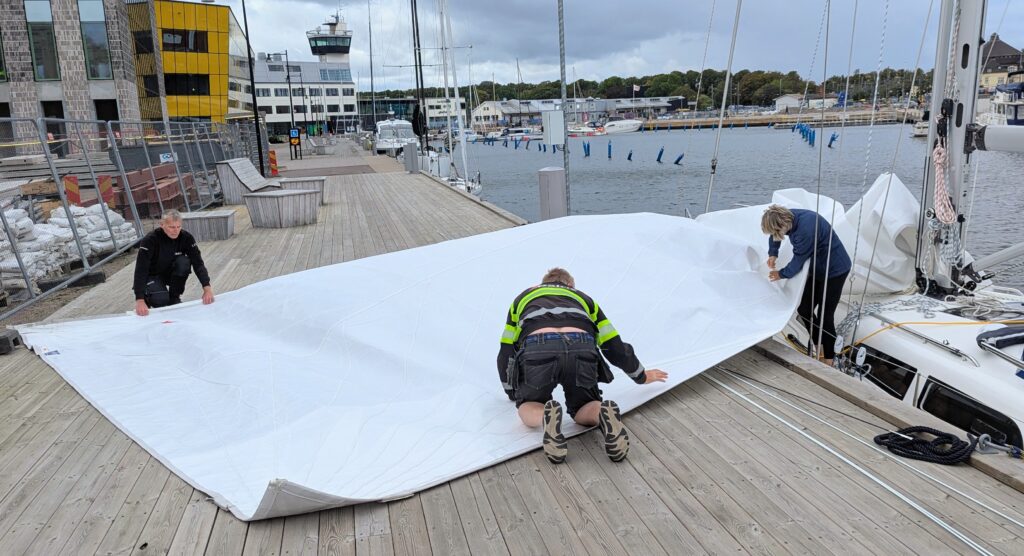
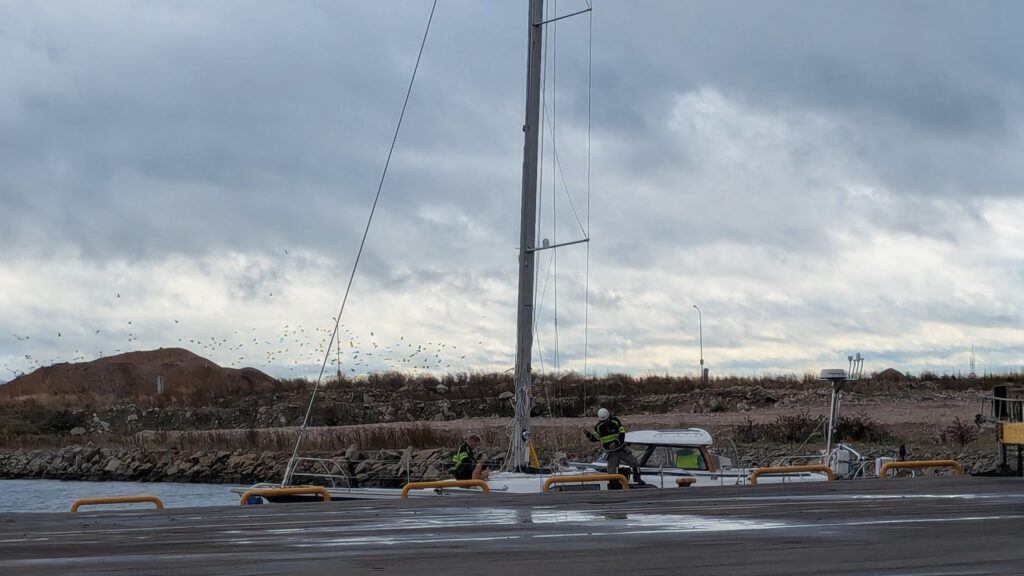
Preparing to lift the mast off with the crane.
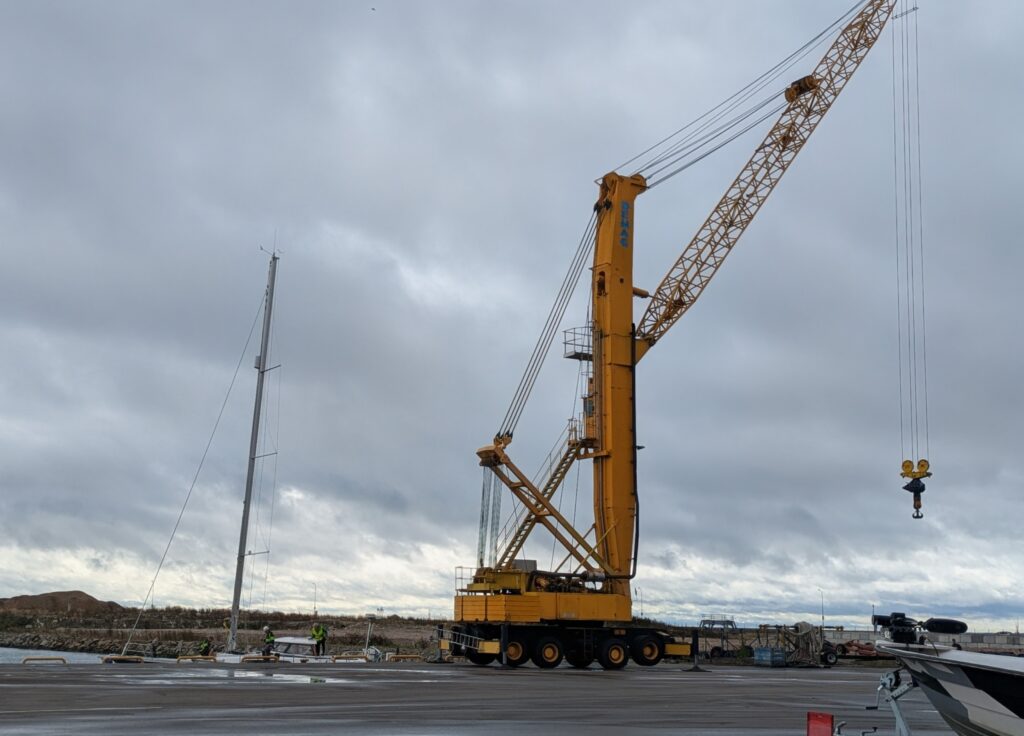
The next morning we returned to the storage marina and saw that Hokukea’s mast had been removed and she was ready to be lifted out of the water. Once we arrived, the rigger and his two assistants jumped into action. They used the crane to place lifting straps forward and aft under Hokukea and then slowly raised her out of the water (she weighs 11 tons). They set her down on straps attached to a cradle that would hold Hokukea securely. Then they slowly moved her just outside of the warehouse for her bottom to be power-washed before storage. The whole process (excluding the power-wash) took just 30 minutes.
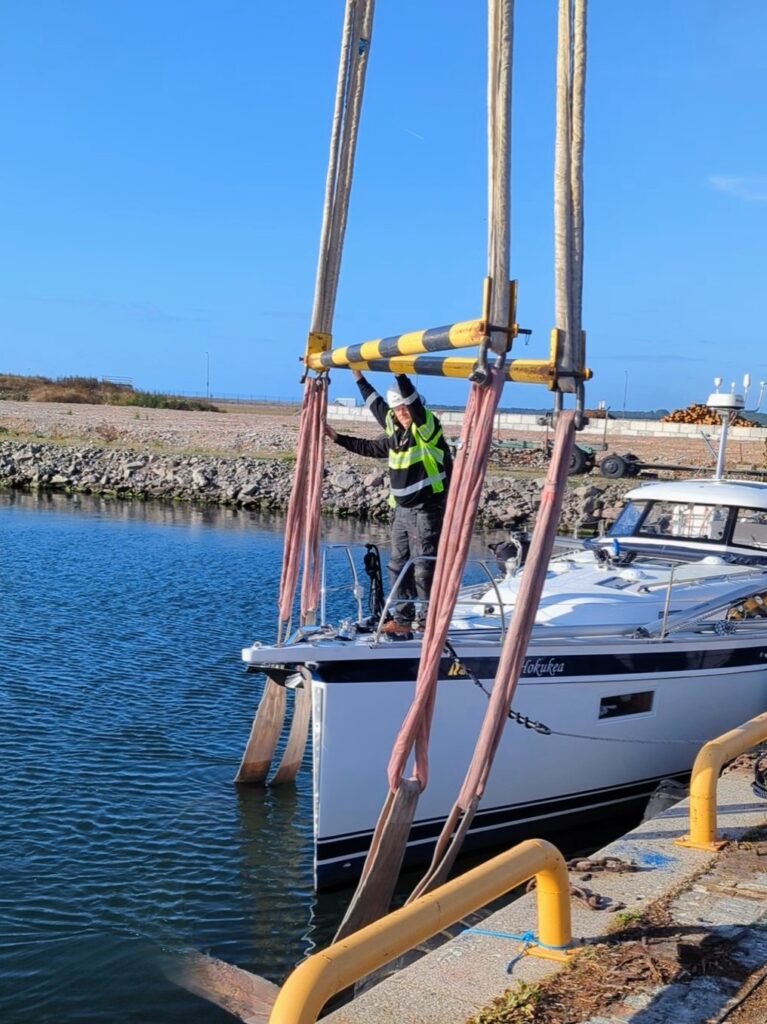
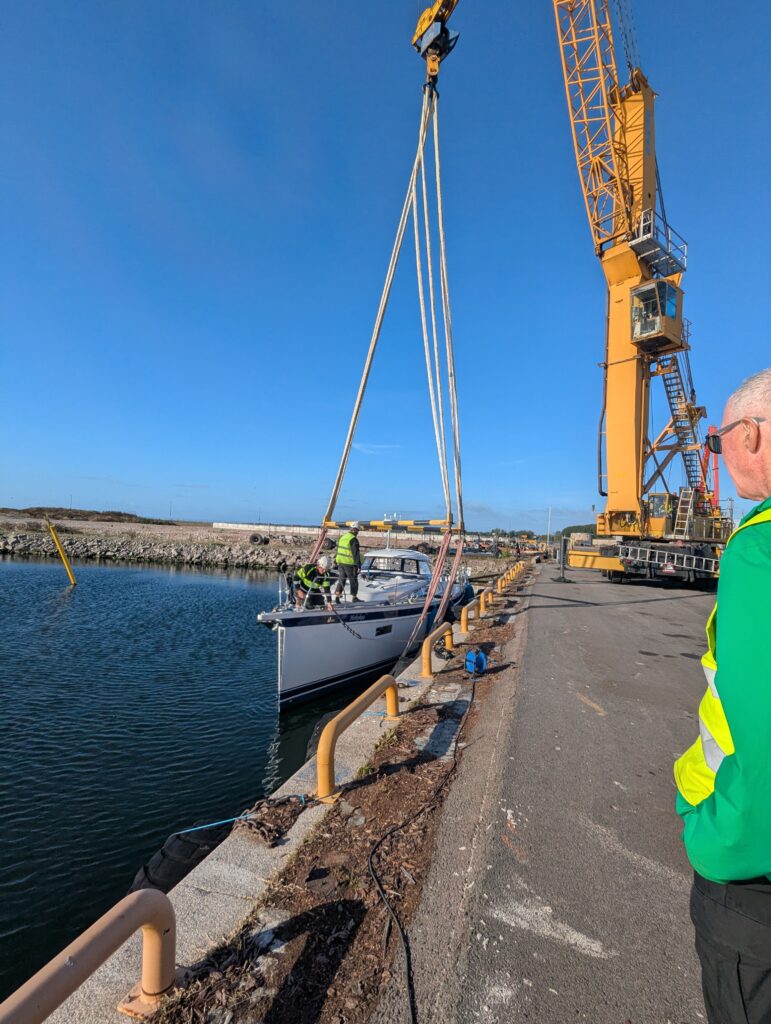
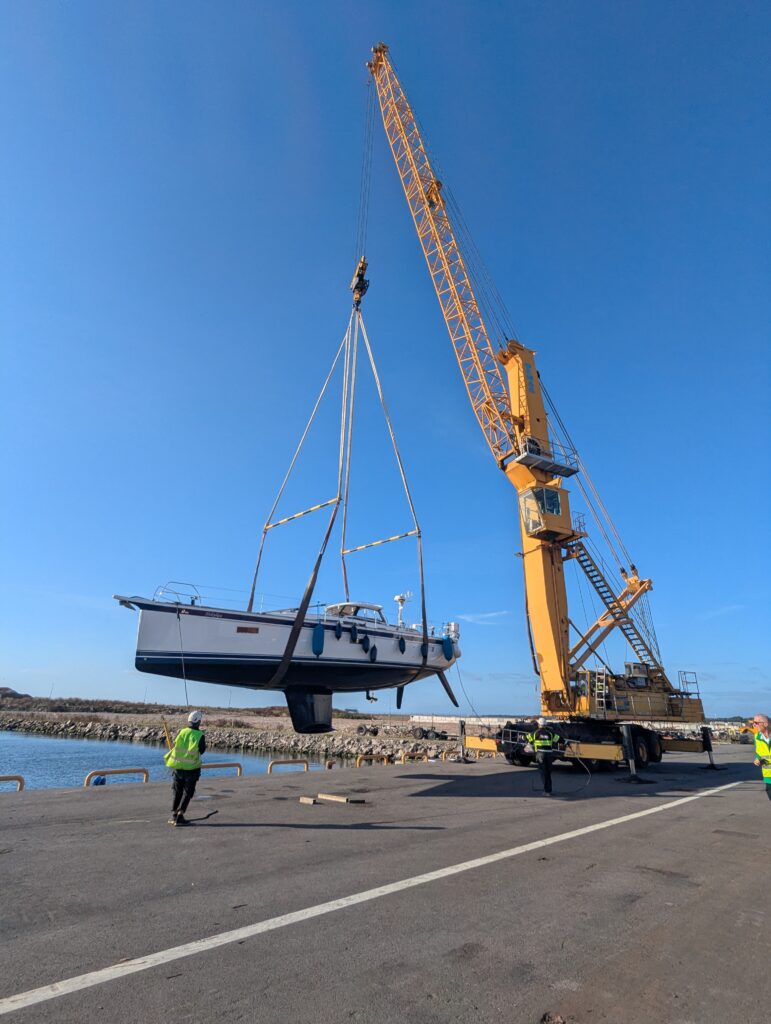
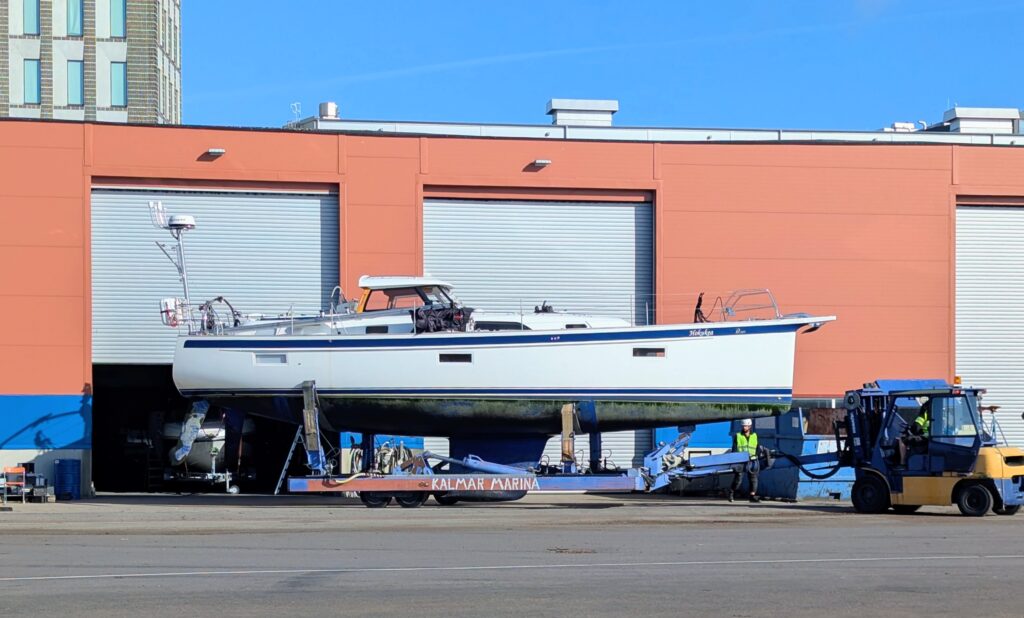
You can see that Hokukea needs her bottom washed. This is the storage building at Baltic-Kalmar Marina where she’ll be kept warm and dry during the winter.
We left Hokukea in the care of Baltic-Kalmar Marine for the winter and went to explore a bit of Kalmar.
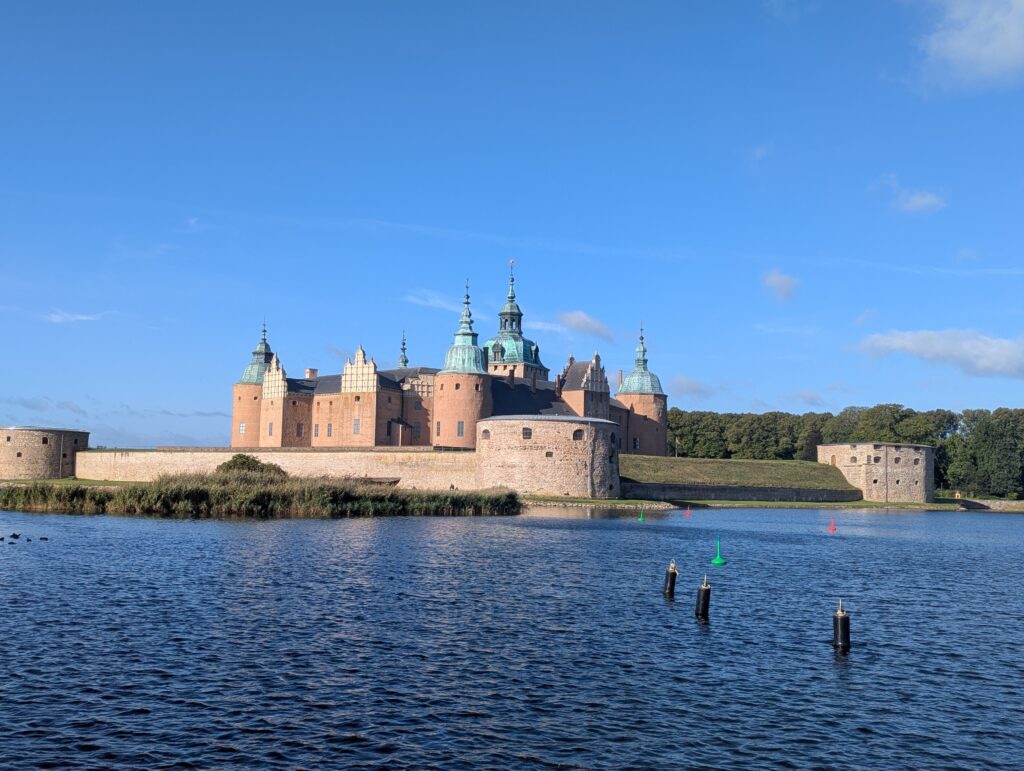
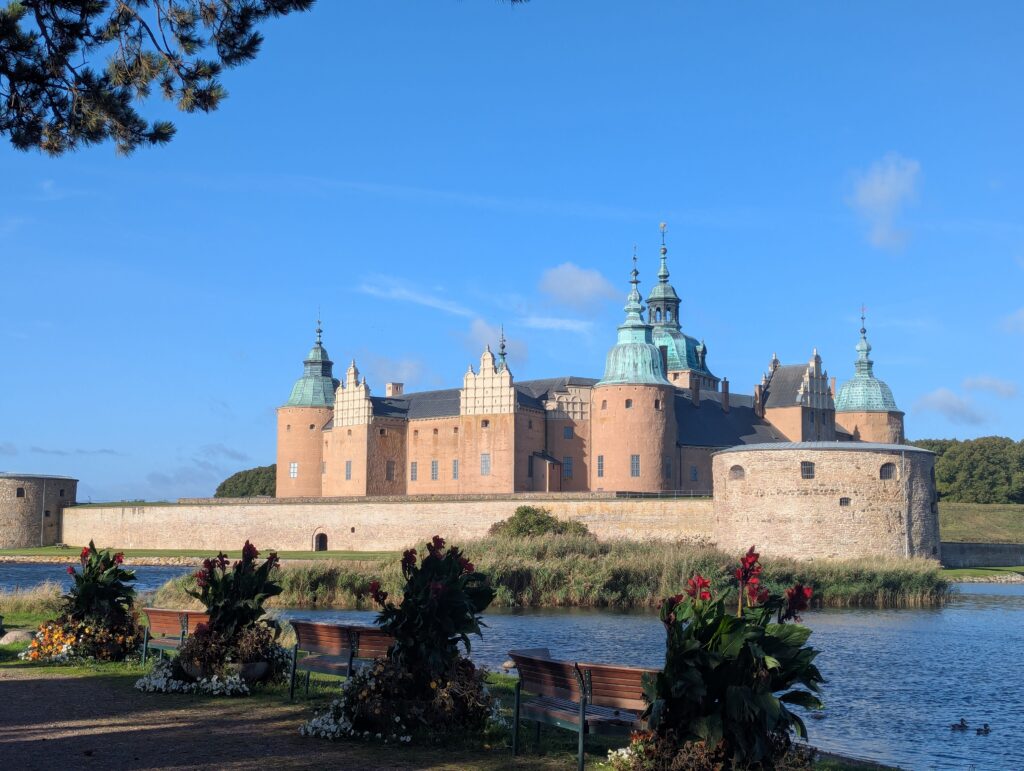
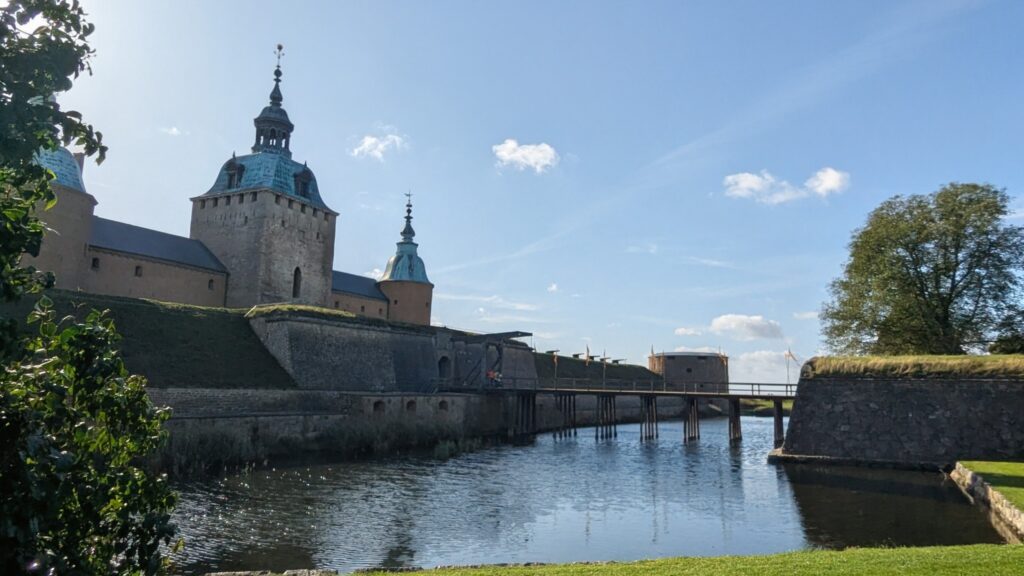
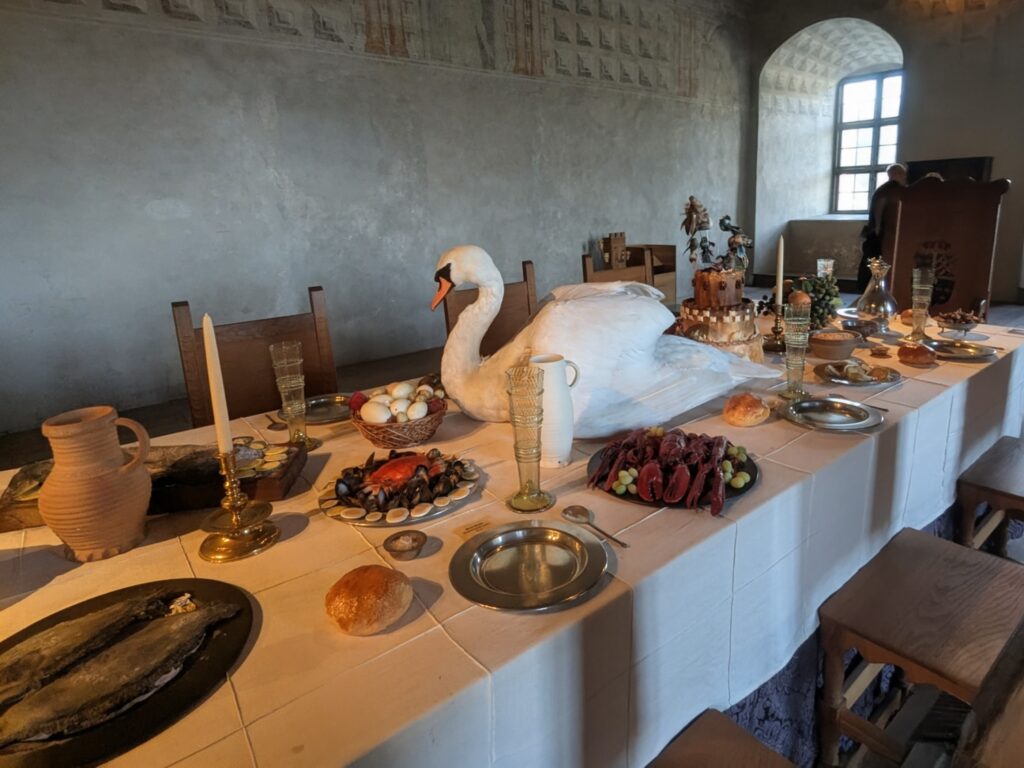
The castle is really the main event in Kalmar! I was sad to see that swan was a menu item in the castle dining room.
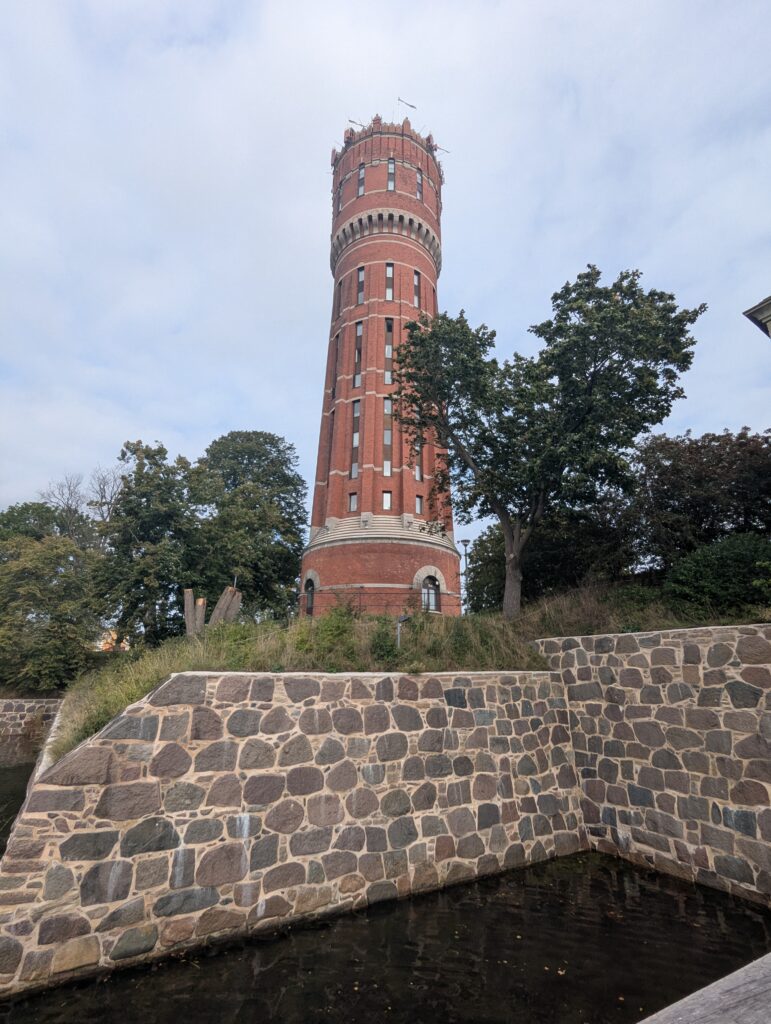
This water tower is a prominent landmark in Kalmar. There seem to be some offices inside the tower.
We had an absolutely incredible Season 2! The weather was overall cooperative, and we generally got to sail and explore where and when we wanted. We covered 1848 nm (nautical miles)…. about 400 more than Season 1. No wonder we are so tired. Here are summaries of Season 2.
To end our season in Europe, we decided to spend a few days in Stockholm and a week in Ortigia, Sicily (the old town of Syracuse).
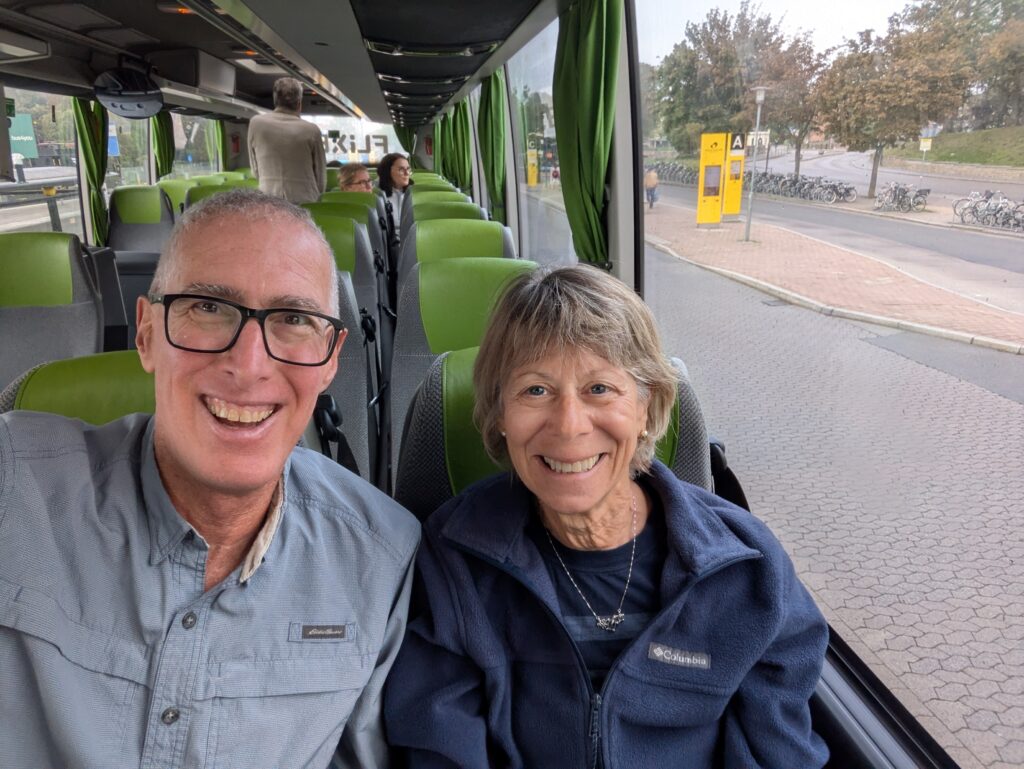
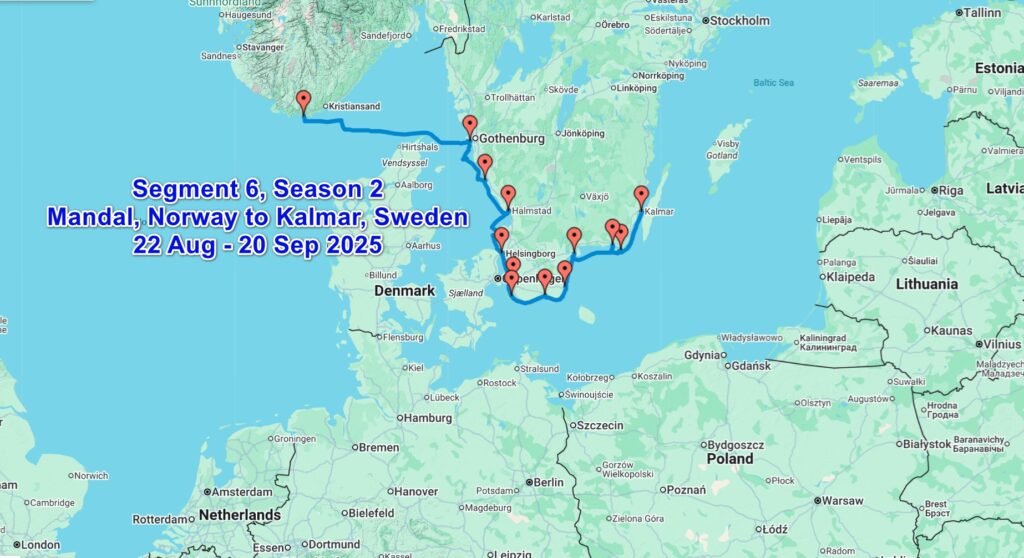
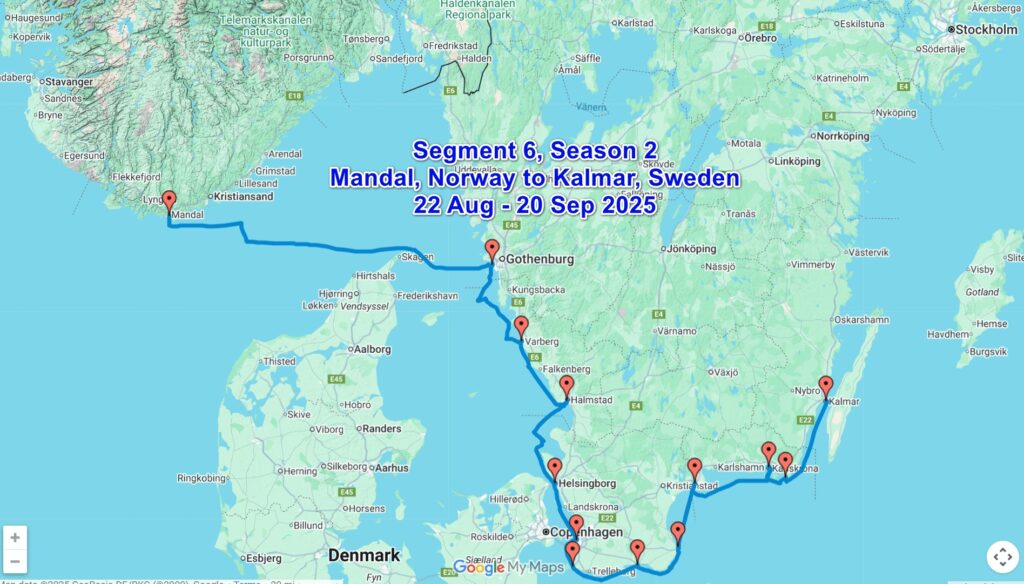
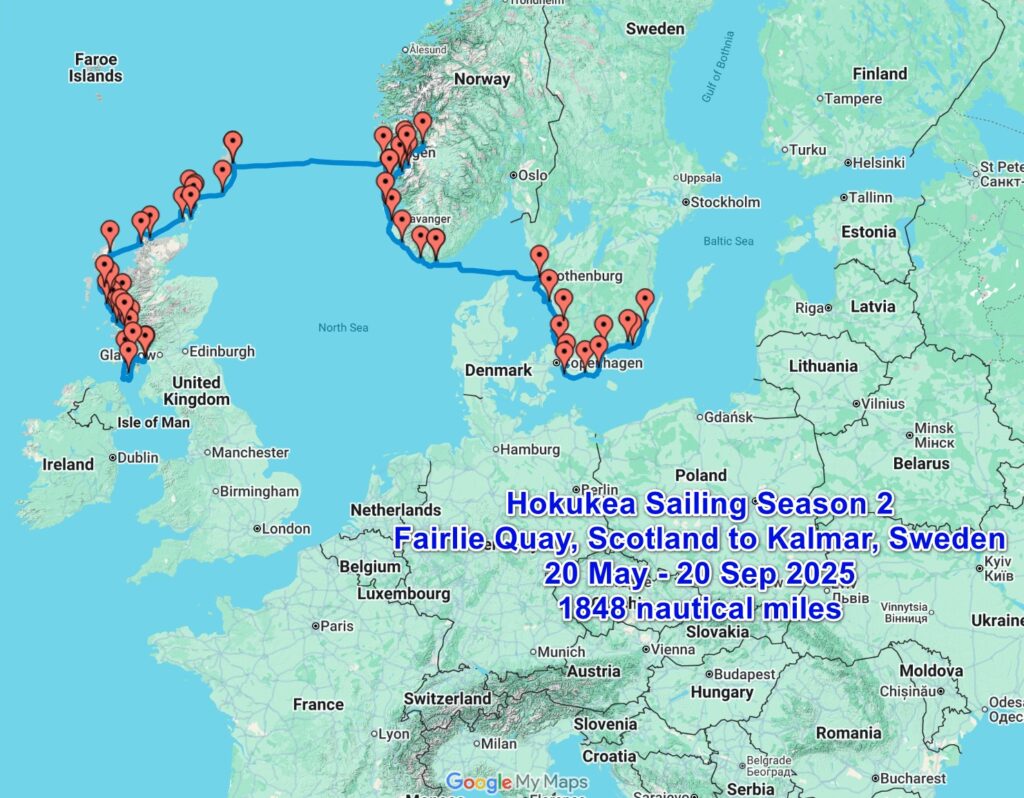
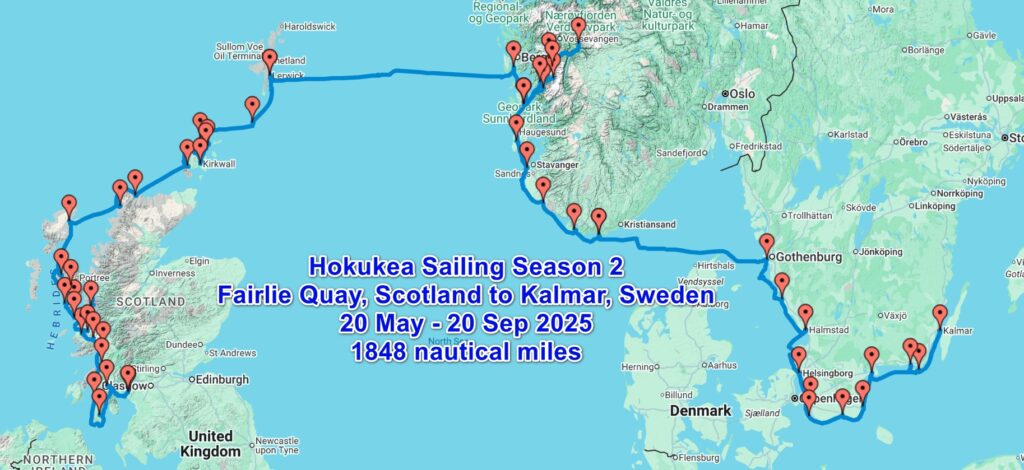
Looks like it was an amazing sailing season. I worried less and enjoyed the ride. Pictures were amazing, all the wonderful places and the food.
See you soon. Love you both. 🦋J🌷
Thanks, Julie! We are really looking forward to seeing you in just a few days!!!
Thank you for sharing your beautiful journey. We are in Lunenburg, NS, and were thinking about the Hokukea when your post arrived as if via telepathy.
Great write-up and fantastic photos!
We had a great time on Hokukea and enjoy following your adventures via the blog.
Happy sailing and cheers!
Thanks, Meg! It was really fun cruising with you and Curt!!! Can’t wait to see you in January.